
02/2024
 Rte: Consejo de la Comunidad Argentino Británica / Esmeralda 634, 2ºD - C1007ABF Buenos Aires, Argentina
Rte: Consejo de la Comunidad Argentino Británica / Esmeralda 634, 2ºD - C1007ABF Buenos Aires, Argentina



02/2024
 Rte: Consejo de la Comunidad Argentino Británica / Esmeralda 634, 2ºD - C1007ABF Buenos Aires, Argentina
Rte: Consejo de la Comunidad Argentino Británica / Esmeralda 634, 2ºD - C1007ABF Buenos Aires, Argentina


Esmeralda 634, 2º Cuerpo, 2º “D” - C1007ABF Buenos Aires - Tel.: (+54 11) 5254-8064 / Cel.: +54 9 11 2528 9364 abcc@abcc.org.ar • www.abcc.org.ar•Facebook: @ABCC.Argentina Instagram: @abcc.argentina•@ABCC_Argentina • YouTube: https://www.youtube.com/@abcc.argentina
Honorary President
HM Ambassador Kirsty Hayes
Chairman
Charlie Fox
Vice-Chairman
John Hunter BEM
Honorary Secretary
Mary Godward
Honorary Treasurer
Robert Cox
Full Members
Gavin Bruce, Janet Bruce Mohr-Bell, Denise Enright, Veronica Hortis, Ralph Kirby, Ronnie MacGaul, Laura Riera, Bruce Thompson
Substitute Members
Raymond Paterson, Guillermo Santana MacKinlay, Juan Wood Ex Officio
Lucy Santamarina
ABCC Office
Sandra Handley, Manager (abcc@abcc.org.ar)
Luisa Ibarra, Administrative Assistant (adm@abcc.org.ar)
Communications
Social Media and Press Contact: John Hunter (Jahunter.ar@gmail.com)
Web: Mary Godward (secretary@abcc.org.ar)
The Bulletin and ABCC Calendar:
Ian Gall (abccbulletineditor@gmail.com)
Events
Laura Riera (WhatsApp +54 9 11 6492 9616)
English
Bruce Thompson (brucejthompson@yahoo.com)
BUENOS AIRES
Belgrano & Urquiza (C.A.B.A.)
Ian Gall (+54 9 11) 4098 1939 ianmgall@yahoo.com.ar
City (C.A.B.A.)
Jimmy Bindon (+54 11) 4811 9404 jimmybindon@fibertel.com.ar
Hurlingham
Joaquín Henault (+54 9 11) 6466 0712 joaquin.hlt@gmail.com
North Riverside
Helen Judd (+54 9 11) 6826 3092 juddlacarlota@gmail.com
Quilmes and Ranelagh
Valeria María Hardie (+54 9 11) 4051 4501 valeriahardie@gmail.com
Southern Suburbs
Andrew Grant (+54 9 11) 4969 0767 andrew@andresgrant.com.ar
Mar y Sierras
Roxanne Munton (+54 9 0249) 458 2414 roxcasabo@gmail.com
Pergamino
George Page (+54 9 2477) 20 0225 geopage919@gmail.com
Western Camps
Dominic Gunningham (+54 9 11) 5006 2538 dgunningham@gmail.com
CHUBUT
Western Chubut
Arthur D. Lowndes arturolowndes@gmail.com (+54 9 2945) 40 8145
Director
Carlos E. Fox
Editor
CORDOBA
La Cumbre Vicky Duff 3548 451861 victoriaduff@gmail.com
CUYO
Carlos Campana (+54 261) 500 9498 las2campanas@yahoo.com.ar
ENTRE RIOS
David Thomas (+54 9 343) 5077313 davidthomas.arq@gmail.com
MISIONES & CORRIENTES
John Haynes (+54 9 3756) 49 8298 john.virocay@gmail.com
RIO NEGRO
Alto Valle
John Anthony Vérel (+54 9298) 458 2577 panchoverel@gmail.com
Juan Martin Gall abccbulletineditor@gmail.com 15 (+54 9 11) 4098-1939
Property of /Propietario Argentine-British Community Council
Please access our archives by using the QR Code provided. Are you interested in the history of the Argentine- British Community?

Finance
Robert Cox (robertoccox@gmail.com)
Fundraising
Lally Barr (lallybarr@gmail.com)
Legal Affairs
Ralph Kirby (ralphkirby@gmail.com)
Welfare
Ted Bagnall (tedbagnall.41@gmail.com)
Youth
Vicky Gibson (vegibson@gmail.com)
Honorary Legal Advisor
Estudio Juan Patricio O’Farrell
Supervisor
Estudio Guyot
Auditor
Suarez y Menéndez S.R.L.
San Carlos de Bariloche ¡NEW!
Juan Wood (+54 9 2944) 410788 juan.wood@gmail.com
SALTA
VACANT
SANTA CRUZ
Rio Gallegos
Pablo G. Beecher (+54 9 2966) 53 3446 pablogustavo.beecher@yahoo.com.ar
SANTA FE
Rosario
Andrew Knight (+54 9 341) 638 7516 andrewknight50@outlook.com
USA & Canada
David McCarthy (+1 248) 912 7356 davidjohn_mccarthy@yahoo.com
Honorary Legal Advisors
Estudio Berton Moreno y Asoc. Graphic Design & Production
Imagine Studio Printer
Artes Gráficas Integradas S.A.
William Morris 1049, 1602 Florida - Prov. Bs. As.
For further details, please contact the ABCC.
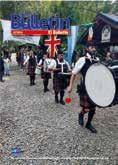
On the Cover
The Bariloche Highlanders Pipe Band march at the Bariloche Annual Gathering held at Tom Wesley’s Cabalgatas and Brewery. See article begining on page 4.
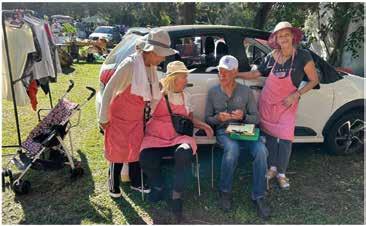
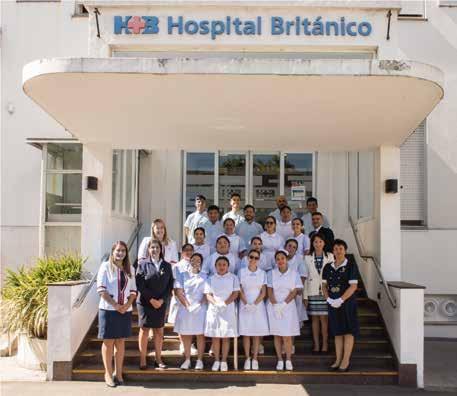
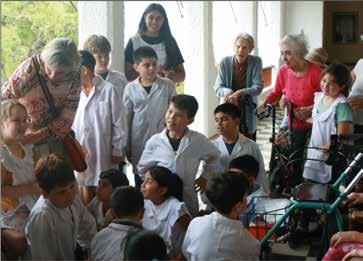
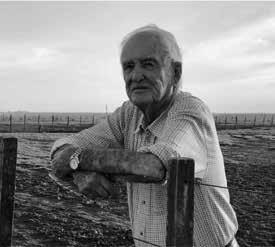



Become an ABCC donor by making a monthly donation of at least $2,500.- or an annual donation of at least $25,000.- in one payment (January 2024 values). You will receive The Bulletin four times a year and our monthly e-newsletter.
Place a notice in The Bulletin and in the Day-by-Day section of our website.
• Congratulate a friend or relative on their birthday by donating in their name.
• Make the announcement of a wedding or anniversary. We can also publish a photo of the happy couple in The Bulletin.
• Remember the passing of a family member or a friend.
• Publish an obituary about a relative or friend.
Contribute to the Flower Fund (In Lieu of Floral Tributes). Ask friends and relatives to donate to the ABCC instead of sending flowers when a friend or family member passes away. Donors appear in the Day-by-Day section in The Bulletin and on the ABCC website.
Advertise in The Bulletin. Prices start at $40,000.
You can also choose to make a donation to BABS or Links House.
To donate online, please follow this link https://www.abcc.org.ar/support-us If you prefer not to donate online, please see below for the ways in which you can make your donation offline.
• Come or send somebody to the ABCC office to make a cash or cheque donation.
• Visit the ABCC office and make your donation with a credit or debit card.
• Send a cheque to the ABCC made out to: "Consejo de la Comunidad Argentino-Británica - No a la orden".
• Authorise a one-time OR a recurring debit from your Credit or Debit Card. Contact us (Tel 1159210634 /email abcc@abcc.org.ar) and we'll be delighted to help you through the process.
• Deposit or transfer a donation into our bank accounts in Argentina or in the United Kingdom (details given below). Please remember to email us at adm@abcc.org.ar to inform amount and date of your contribution. Otherwise, it may be lost in the “anonymous donation bag”.
Argentina:
Banco Patagonia
Bank: Banco Patagonia
Account: Consejo de la Comunidad
Argentino Británica
Sucursal: Nº 10
Cuenta Corriente Nº: 010-008315051-000
Alias: ABCC.ARGENTINA
CBU: 0340010400008315051005
CUIT: 30-52566392-9
Outside Argentina:
Lloyds Bank
Bank: Lloyds Bank
Account Name:
Argentine British Community Council
Branch: Pall Mall St. James
Account number: 01362730
Sort Code: 30-00-08
BIC: LOYDGB21012
IBAN: GB85 LOYD 3000 0801 3627 30
https://www.abcc.org.ar/what-we-do/who-we-help
The ABCC can receive property and donations. We can help you sort out your wishes and ensure that they are carried out smoothly, particularly if you do not have a family and are concerned about your future. If you have included the ABCC in your Will, we would appreciate you contacting the ABCC on +54 11 5921 0634, Cel.: +54 9 11 2528 9364 or abcc@abcc.org.ar) and we will put you in touch with our Legal Department, to help you through the formalities.


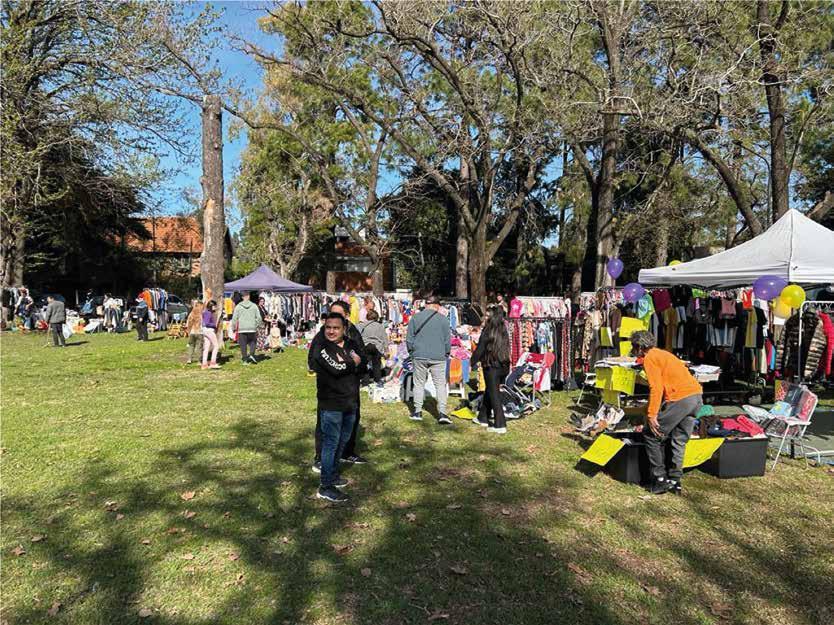
Our November event was a great success. Many sellers and buyers. As always exhaustion and fun was had by the team. A fantastic day all round.
We are now back on track for our first 2024 event to be held on April 7. The team is already preparing for a great day where we will all take on the jobs that we have to do making sure that we all enjoy ourselves.
Thanks again to this fantastic group.
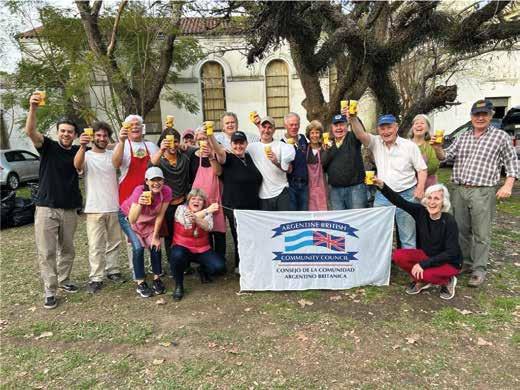


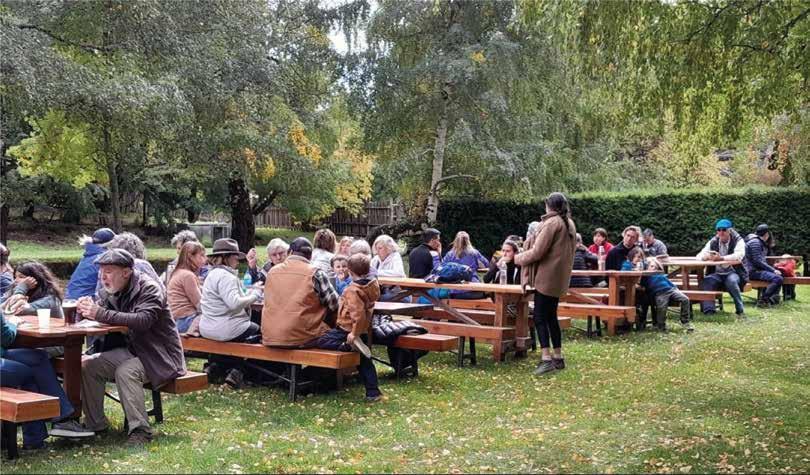
On the 7th of April, four-hundred people gathered to enjoy our Annual Gathering, held once again at Tom Wesley's Cabalgatas and Brewery to whom we are truly endebted.
ABCC Bariloche's team members collaborated with every detail of the organization. A number of the helpers from outside the ABCC team were gathered together by Committee Secretary who hopes they will, in time, become Committee members as well!
We were fortunate to enjoy the visit of ABCC Chairman Charlie Fox who shared his warmth and bonhomie, and even worked as just another helper!
While Paul McCartney's songs played in the background, performed by the "Feel The Beat" combo, who we are duly endebted to, visitors enjoyed asado, vegetarian food, delicious cakes and drinks.
Later on, everybody was treated to a display by the Bariloche Highlanders Pipe Band & Dancers, and further artistic talent was provided by Kaylan* Irish Dance and Poems, while the Argentine Folklore and Dance group "El Antiguo" added a touch of local colour and character.
Once again, this was a true community celebration, characterized by the joy of being able to help Fundación “Cerca Tuyo”**.
*Kylan is an Irish dance troupe whose Director recites irish poetry between the dance numbers.
**Fundación "Cerca Tuyo" is a local NGO catering to the care of oncology patients from all over who visit San Carlos de Bariloche for treatment; they and their close family members are given shelter during the time they are being treated. Therefore every possible assistance we can provide is greatly appreciated.
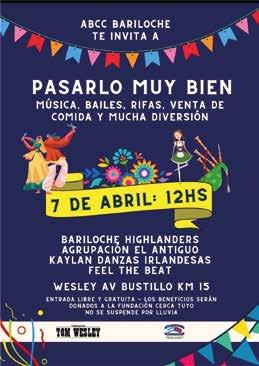
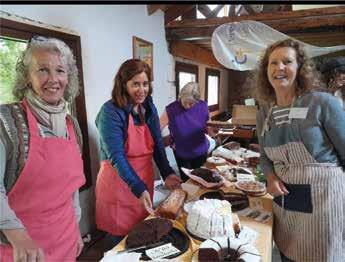


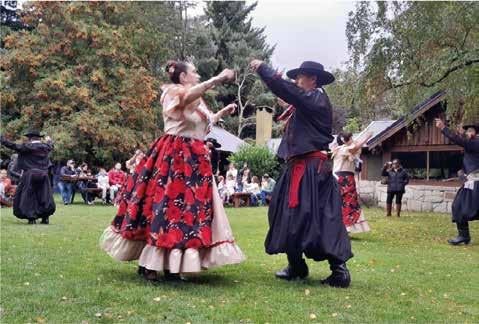 Juan Wood - Chairman
Juan Wood - Chairman
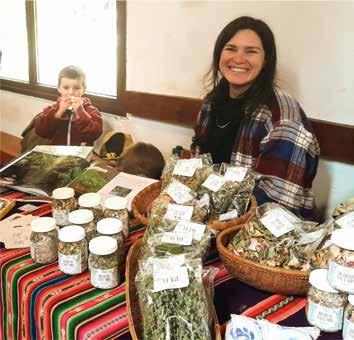
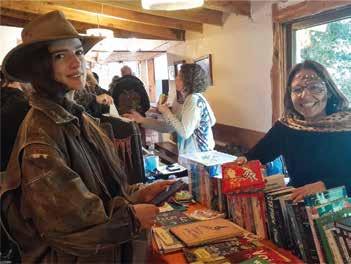
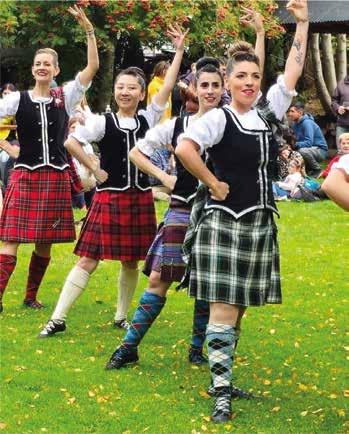

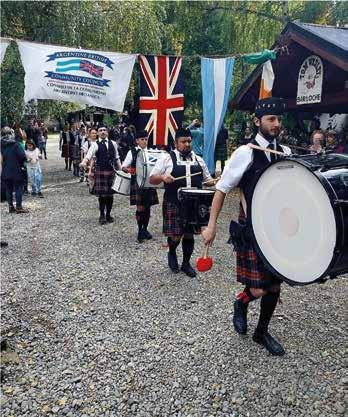
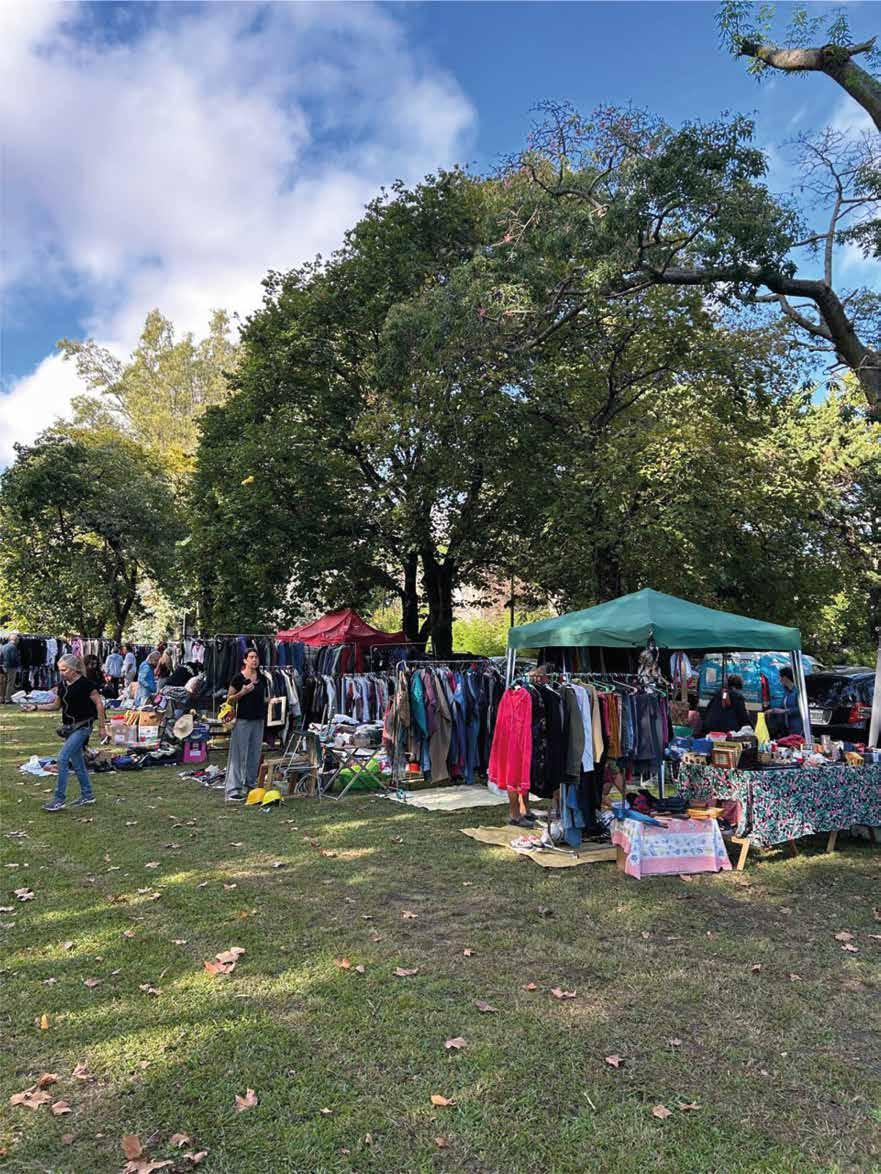
Our first CBS of 2024 was a great success. The current mosquito issues caused concerns but once the venue was mowed and tidied up and, fortunately for us, was fumigated by the San Isidro Council, we could go ahead with the event. With nearly 100 cars, the morning started off with our parking volunteers hard at work organizing the vendor cars whilst the rest of the team started arranging tables and parrilla in preparation for the catering service. All I can say is that we were all rushed off our feet all day providing food, drinks, coffee, tea and cakes. Absolutely everything was sold. Both sellers and buyers were happy with the sale. Thanks as always to this great team for all their hard work and commitment to ensure the success of the event. Fun was had by all!
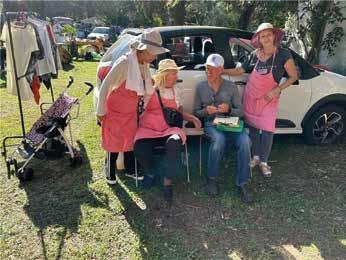
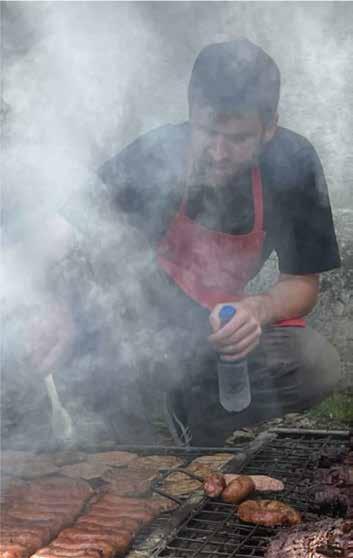
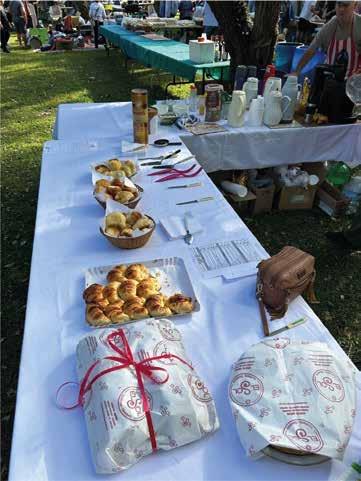
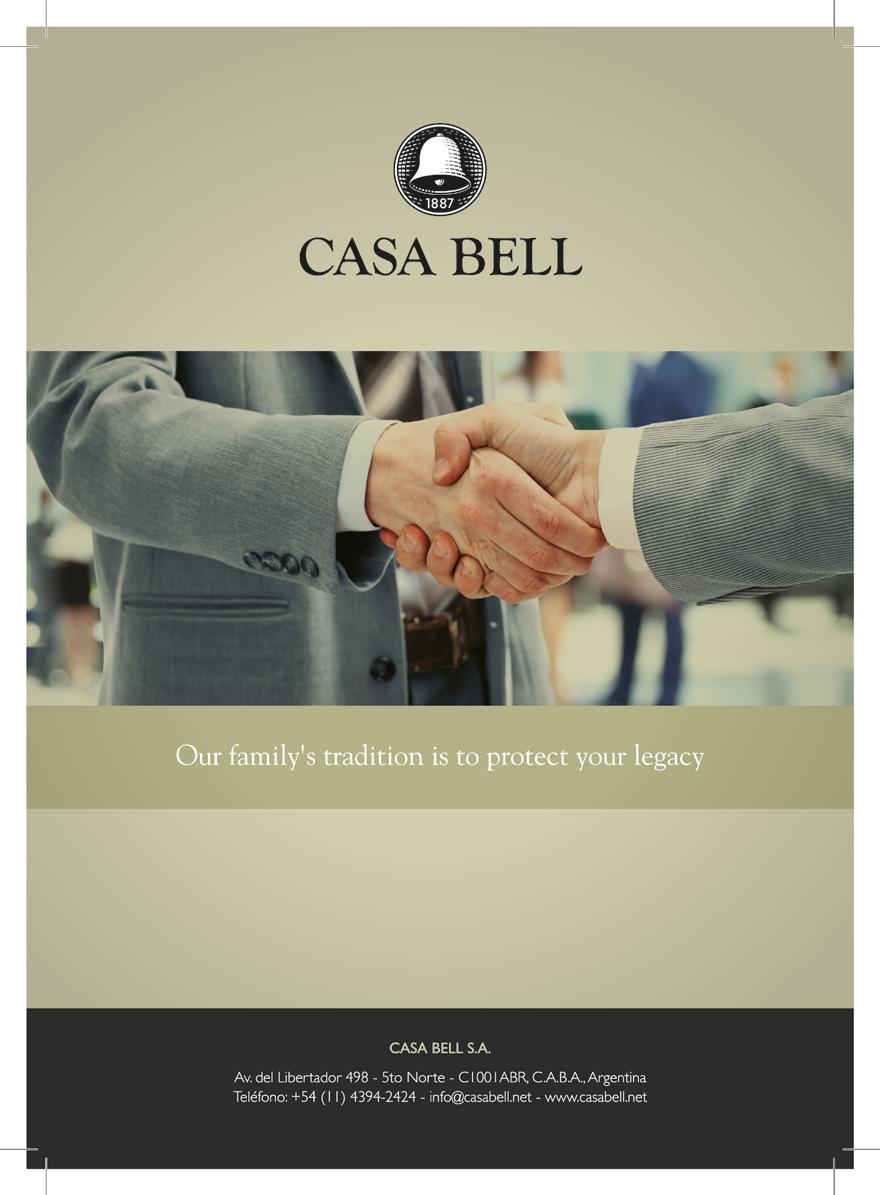
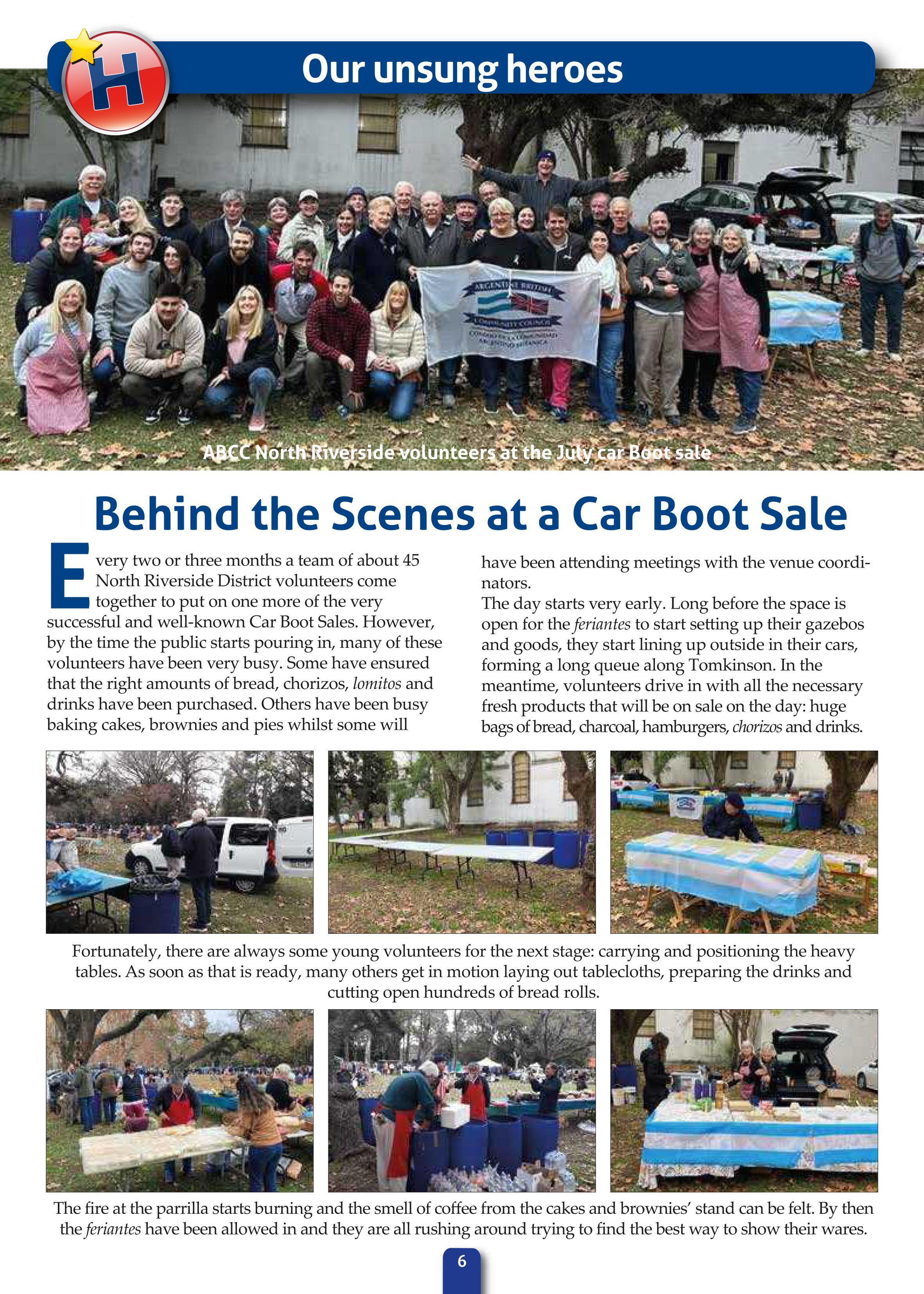



Dr. John D.C. Emery was born in São Paulo, Brazil, in 1939, and moved to Buenos Aires with his family in 1949. He schooled at the Colegio Nacional de Buenos Aires and graduated from the Faculty of Medicine (UBA) in 1964, when he joined the British Hospital as an Intern. In 1966, he became a member of the Medical Clinical Staff, eventually becoming its Head in 1991. He completed his postgraduate training in Internal Medicine at Hammersmith Hospital in London and at the Institute of Chest Diseases at the Brompton Hospital from 1968 to 1969. His interest in pulmonary diseases led him to establish the Pulmonary Function Laboratory, where he served as Head of the Department in 1977. In 1999, he was appointed Medical Director of the British Hospital, succeeding Goodman F. Mercer, a position he held until 2007. He subsequently created and coordinated the Departments of Institutional Relations and International Relations, retiring in 2014 after over 50 years of service.
Prior to his retirement, he began to use his skills as a prolific writer, producing articles on both historical (biographies of English-speaking physicians in Argentina from the 18th, 19th, and early 20th centuries) and medical topics, as well as hospital-related subjects. One of his most notable works was a book, published in 2016, on the History of the British Hospital (1844-2010).
Married to María Marta Uzcudun, a

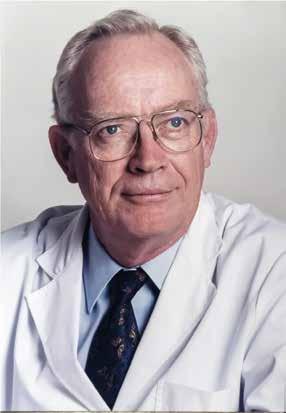
graduate of the Buenos Aires British Hospital Nursing School, they had four children: Nicholas (also a physician in the Medical Clinical Service of the HB), Peter, Moira, and Karen, as well as several grandchildren who proudly listened to the testimonies of farewell from many attendees at the funeral
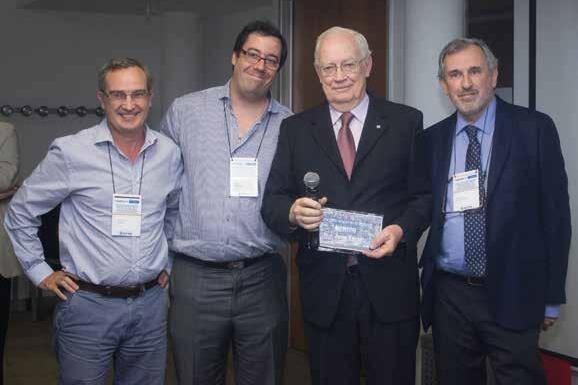

service on April 24th at the British Cemetery in Buenos Aires.
In 2017, the Argentine Society of Medicine recognized him for his distinguished personal history as a Teacher and Mentor of young professionals. He was chosen as a Mentor for his attitude and aptitude as a manager, guide, tutor, motivator, and promoter towards younger generations, shaping their lives towards successful careers in their respective fields.
Following his recent passing on April 23rd due to a painful illness, numerous testimonies from healthcare personnel and patients who knew him emerged. For example, "he was one of the great professionals of our Hospital; an excellent person and a professional; the best representative of values; a gentleman, a great example of an era of the Hospital and its physicians; wisdom, prudence, and a profound sense of ethics. A valuable man has left us, but he left many teachings; an example to follow, he will always be present within the walls of the Hospital and in our hearts; a gentleman, a great person, a master in medicine, ethics, and life; a committed man dedicated to his patients, always preaching by example; a very powerful
symbol of the hospital that we do not want to lose, we must be noble and brave to firmly preserve the identity of the HB, which he was always proud of," among many others.
As mentioned by Dra. Lucila Fernie, "in the face of such a loss, we have a great challenge. To keep his legacy alive. Each of us must embody the values he represented in all aspects of his life, but especially to uphold them for the good of our beloved hospital. The young people must see in us what we learned and saw in John. Hopefully, we can fulfill that responsibility. It is the only way to continue being a hospital with a capital 'H'. Different, the one that makes us proud to belong to. The one he loved and to which he dedicated his life."
Last year, together with Dr. Emery, we unveiled a statue which was discovered buried in our Hospital grounds, that of Thomas Sydenham, known as the English Hippocrates or the father of British Medicine (please see The Bulletin 4/2023, pag. 27). We believe that John deserves to be called the Thomas Sydenham of the British Hospital, and as such, in the future, one of the new hospital rooms should bear his name.
The ABCC Bulletin pays tribute to the memory of the late Dr John David Charles Emery who for many years contributed informative articles on the British Hospital of Buenos Aires.
Begining in 2008, Dr Emery supplied the ABCC Bulletin with a constant flow of writings covering a wide variety of subjects which included news on the Institution he once headed as Medical Director, and several other papers on healthcare. In-depth articles spoke of medical training, nursing and the Nursing School, hospital care, serious illnesses, vaccination, skin care, and liver transplantation. At the time, in his capacity as Head of the Hospital's Institutional Relations department, he was ideally positioned to impart knowledge on the Hospital's history, how it works, what it does and how it does it and give tips on investment in building and equipment, medical assistance, outreach programs, procedures and the well-being of the Institution itself. He also reported (2011) on the association between the Buenos Aires British
Hospital and the Argentine Pontificial Catholic University when joining forces in clinical and surgical training.
Historical research on the lives and professional activities of British doctors who served the Hospi tal's purposes included those of Michael O'Gorman James Paroissien, James Falkner, Robert Reid, John Leslie, Joseph J.T. Redhead, Leslie Cooper, Lovat Ashe Mulcahy, Cecilia Grierson, James Mackenzie Davidson, Harry Reece Ferguson George L.A. Mulcahy, Robert Edwin Halahan, John Alston - and the last profiles were on doctors Michael John Petty and Michael Joseph Petty, published in Bulletin number 4 of 2023.
Dr John Emery, doctor consultant, historian, counsel and family doctor (in my own case), whose legacy will be recalled at the British Hospital from now on, and who the Bulletin will miss greatlymay he truly rest in peace after a life of service caring for others.


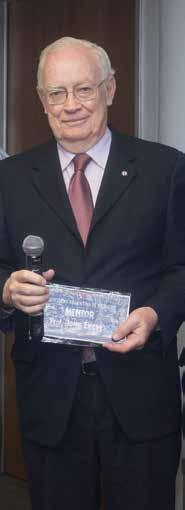
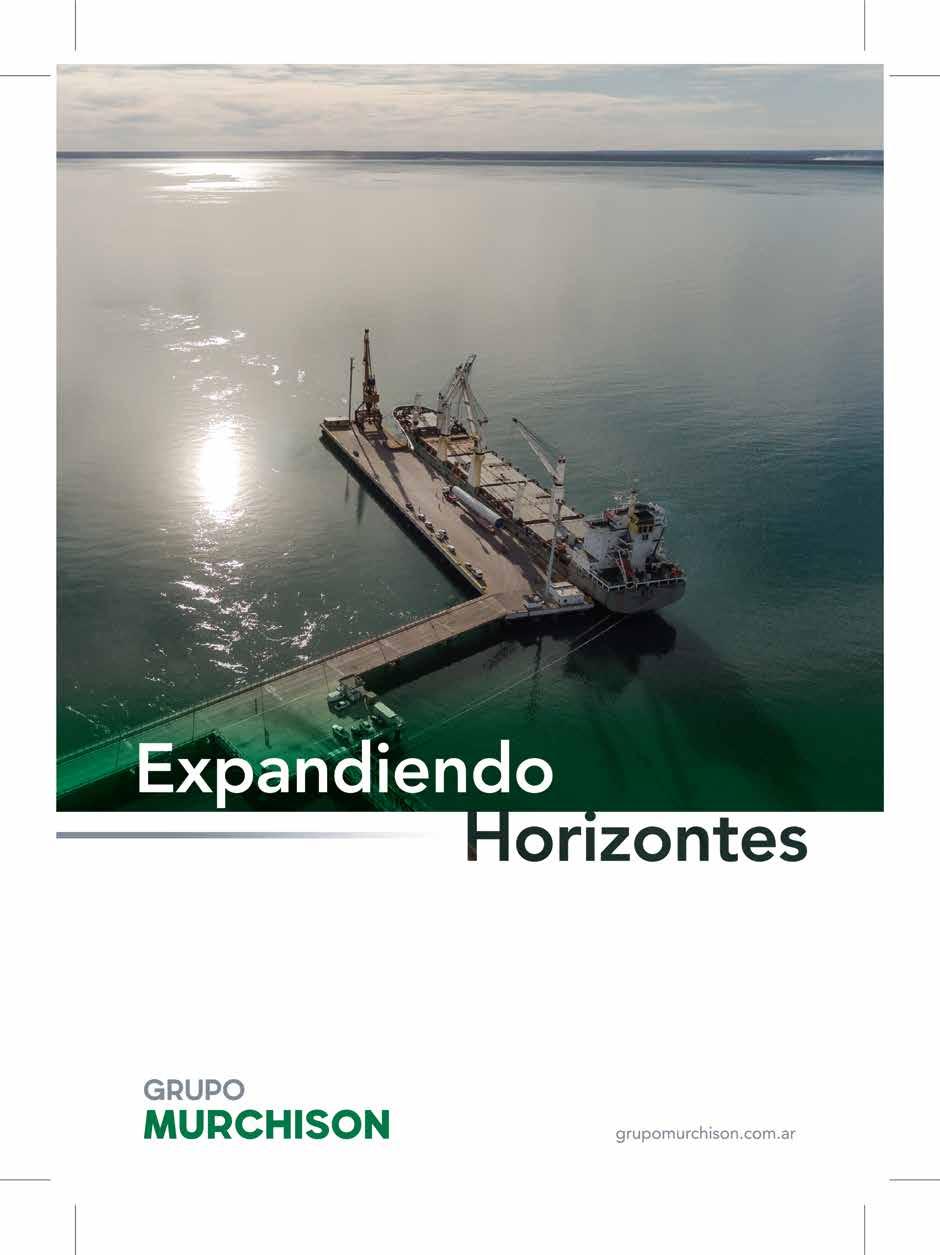



On April 26th, the Buenos Aires British Hospital held the Nursing School Graduation Ceremony of nursing students. The school - which was the first educational institution in the country - was founded in 1890 by Isabel Eames, a graduate of the Nightingale Home and Training School for Nurses at London’s King’s College.
Since 1892, the year of the first graduation, we have marked this significant moment annually.
From that date on, a total of 2.152 professionals have graduated from our School. In 1993, the tertiary level of education transitioned to university level with the arrival of the Universidad de Buenos Aires as the accrediting entity, maintaining the historical excellence of our School's teaching and its Faculty, as established by our Academic Unit.
In 2014, an agreement was signed with the Pontifical Catholic University of Argentina, establishing the Nursing Degree programme. Both institutions now co-exist and train professionals
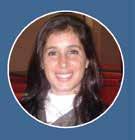
who not only work at the Buenos Aires British Hospital but at various levels of healthcare in our country and around the world.
The legacy of applied science in daily tasks as instituted by Florence Nightingale, combined with empathy and a vision for development, remains the paradigm that distinguishes our graduates.
Three awards are given at the graduation ceremony: one is awarded by the Association of Physicians and Dentists, another by the British Hospital Nurses Association, and the third one, the "Doreen Dover Award", is awarded by the Nursing Board. All of them acknowledge the best academic achievements during each study period.
The traditional Nightingale Lamp - lit by the Matron for the graduates - symbolically conveys the light of knowledge, the emotional intelligence to tackle professional challenges, and the wisdom to excel from this point onwards.
We wish the very best to each of the newly graduated nurses!
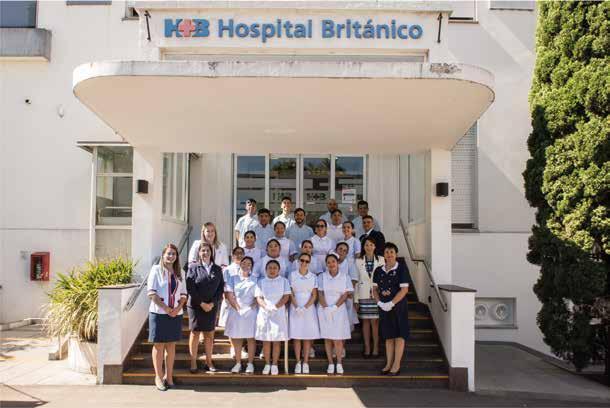

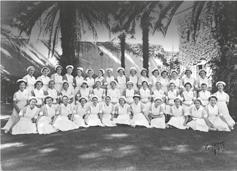
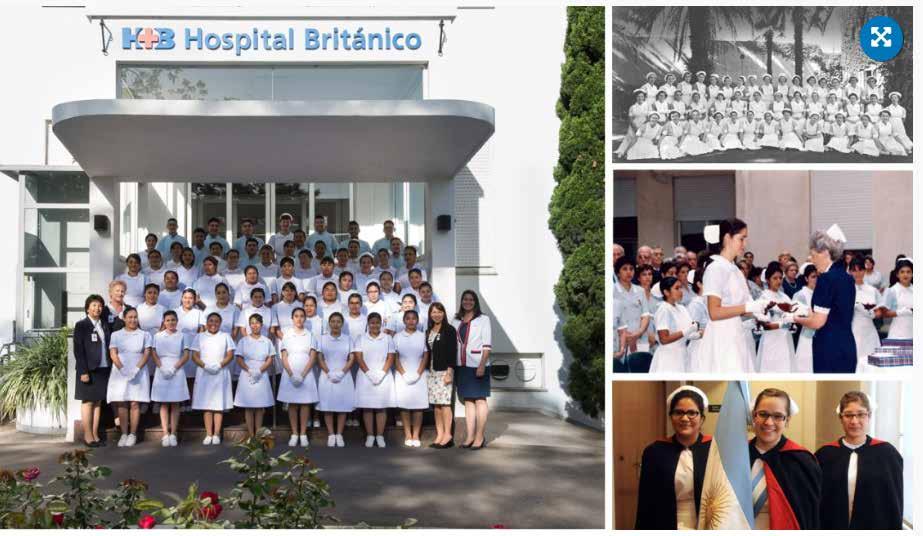
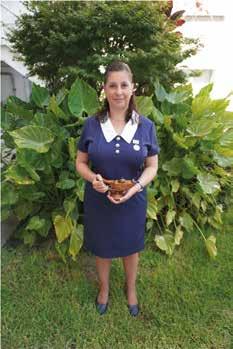

Special Remembrance Day Service

On November 11th, Carol Shearer led a service at Links to commemorate Remembrance Day. Links residents were joined by several members of the British Community, and Frances Evans, Toni Gunn and Carla Calusio shared their personal Second World War experiences.
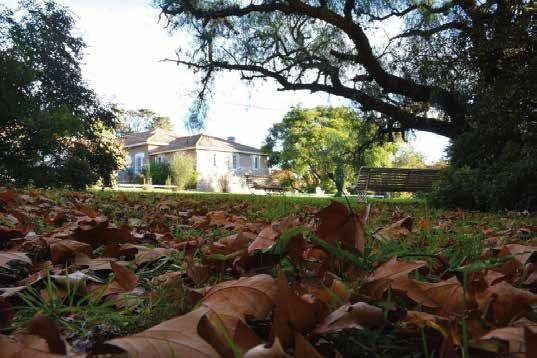
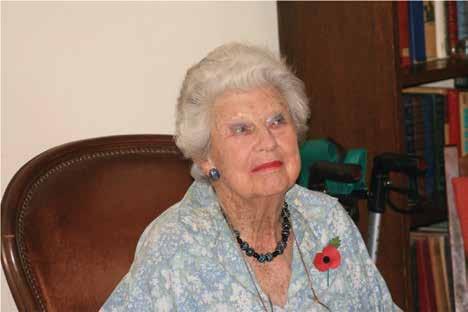
For some years now, Ana Cércola has been holding workshops at Links using stories, both oral and written, through which our residents have explored the meaning of words, sharing experiences, ideas and feelings.
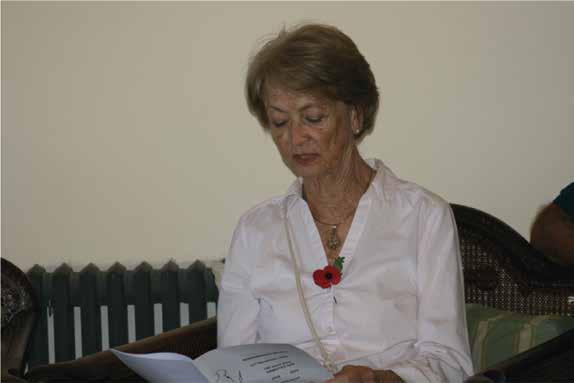
During 2023, Ana, who works at the local Alfredo Benitz School in Cruz Chica, brought together our residents with the children from 1st to 3rd Grades at that school. Letters were exchanged over the months thus creating a wonderful connection between generations. The project ended with a visit to Links House by the children, where sweets and refreshments were enjoyed by all.
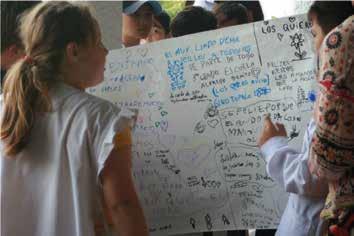
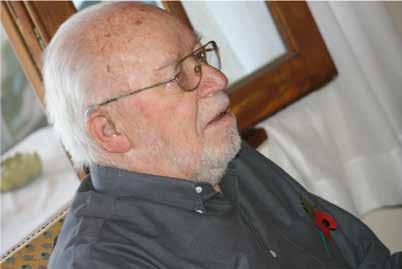
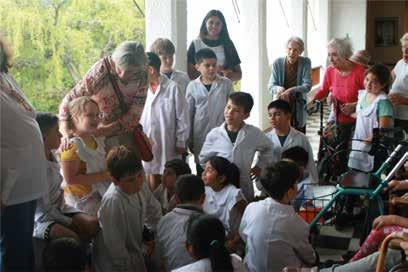
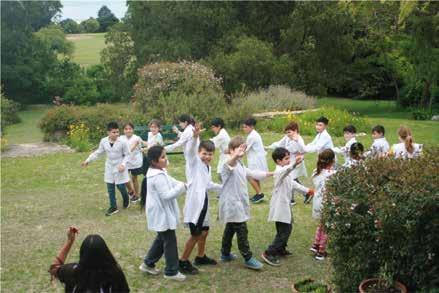
 Judith Carr Hutton
Patsy Roulet
Judith Carr Hutton
Patsy Roulet
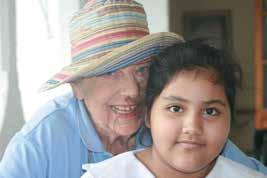
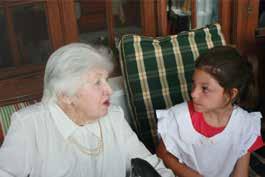
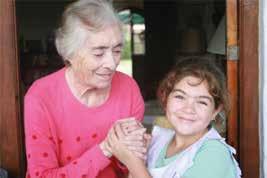
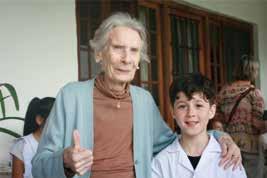
Saint Paul’s School visits Links

Links House was visited by St Paul’s Secondary School students (4th Year) in a project related to a school subject: FTV - Formación para la Vida y el Trabajo.
The students visited the Home on a weekly basis in the second half of the year, sharing stories and experiences across the generations.
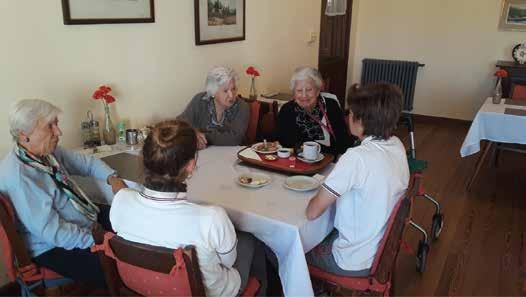
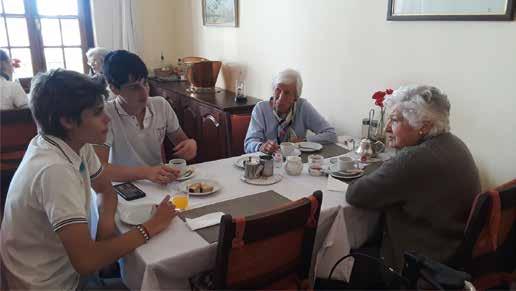
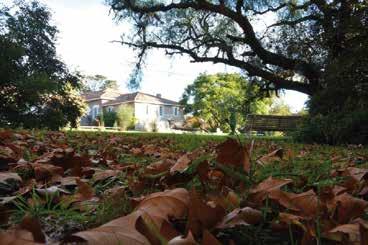


it retirement centre ideal for enior citizens in the lthy hills of Córdoba.
Follow us
 Inga Williams, Toni Gunn, Judy Hutton and Sara (Mariam) Teubal entertaining the 2023 4th year students from St Paul's
Mariam Teubal in conversation with a student
Judy Carr Hutton Grace (Toni) Gunn
Susi Castillo
Inga Williams, Toni Gunn, Judy Hutton and Sara (Mariam) Teubal entertaining the 2023 4th year students from St Paul's
Mariam Teubal in conversation with a student
Judy Carr Hutton Grace (Toni) Gunn
Susi Castillo
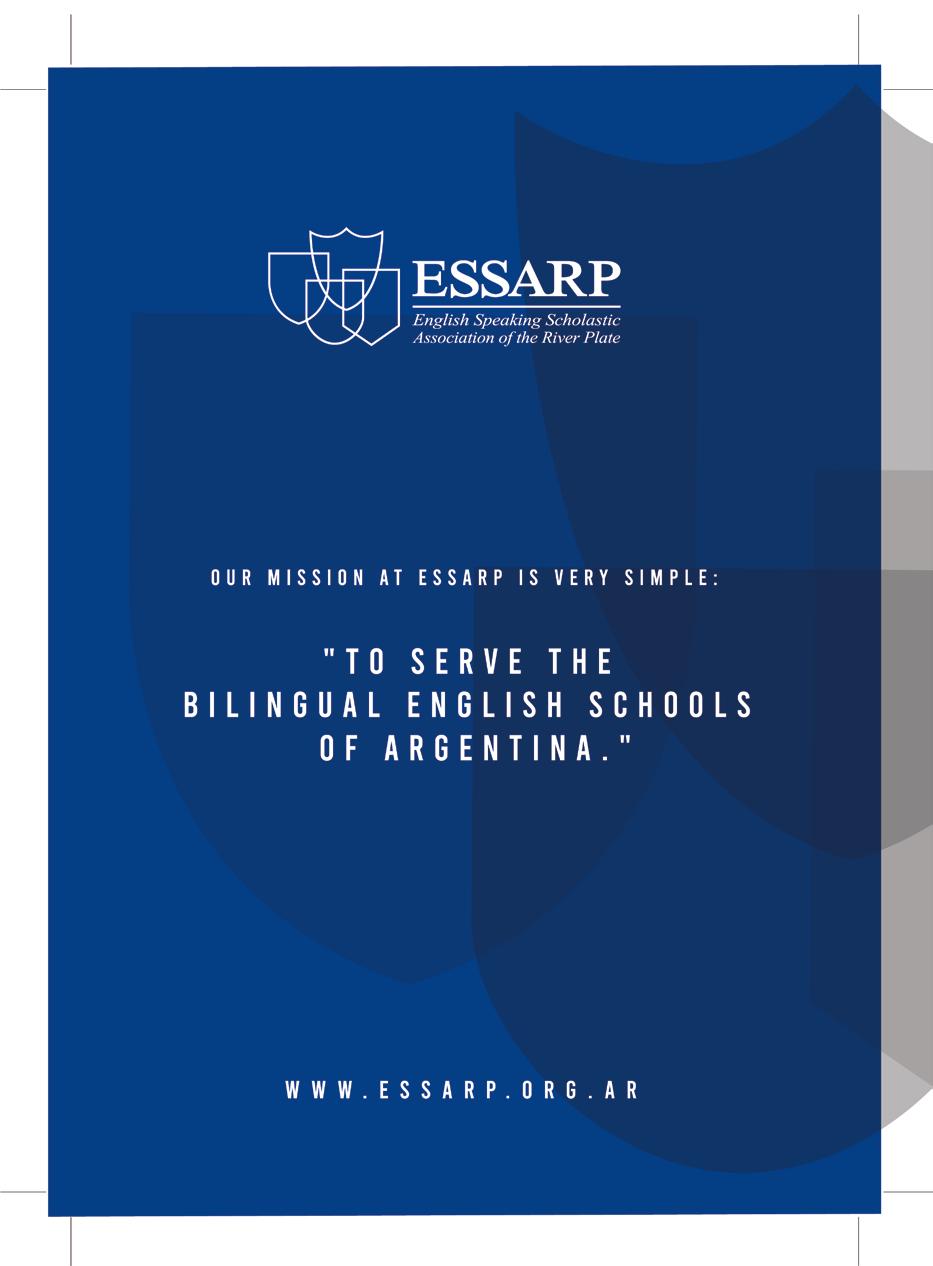

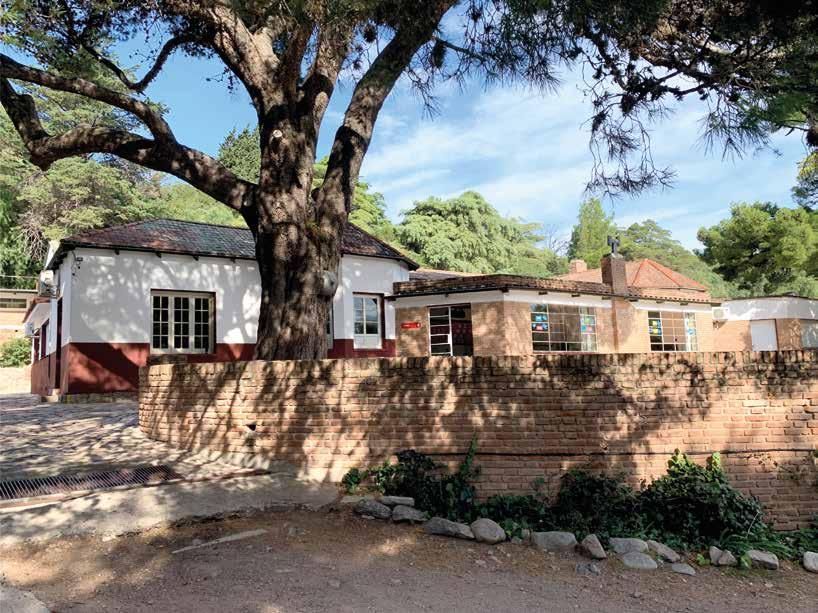
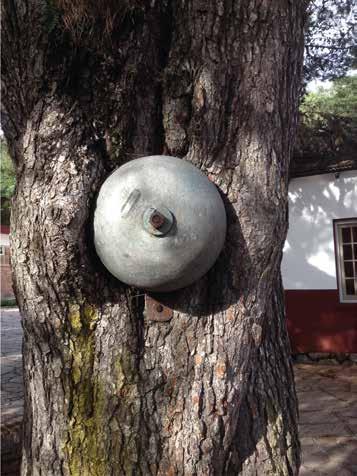
"The SOBNews was a nostalgic, cathartic, shared endeavour, a newsletter bringing a smile and a laugh to those who had once attended St Paul’s School, hence SOB (St Paul’s Old Boys). Most of us will relate to the experiences; how we felt as students, and how those same events have softened with time and changed our minds regarding specific issues. Being a Boarder has never been the best of moments in a student's life, so much so that there are hundreds of mentions regarding table manners, 'six of the best', Catholic and Protestant Sunday Services, 'out of bounds', missing the family, etc. The writings here, plus e-mails from former students of different ages, have helped put together this review to mark the school’s 70th anniversary."
St Paul’s Boys School was set up in 1954 at the Cruz Chica Hotel in the province of Córdoba, up the road from La Cumbre, before moving a few years later to its current location at Cruz Grande. The Schooll was founded by Mr. Albert ‘Bob’ Thurn OBE, who for well over half a century was responsible for one of the most well-known Bilingual schools in South America. Mr Patrick Wilson recalls that there were just 27 students boarding there when he was sent in 1958. Time saw St Paul’s headcount grow to
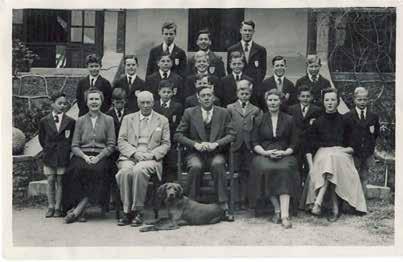
about 150 students in 1961 - today, that number is 330! In the late 1970s it became co-ed, and today it is a Day School.
The constant inflow of students resulted in almost permanent construction: new classrooms, the Lab, Headmaster's living quarters, the Boys’ Hall, the swimming pool, tennis courts… A bird’s eye view will show the different buildings and sports areas covering 300 acres of land. Currently, St Paul’s is run by an Administrator (former student Mr Deryck Ward), a Parents' Board and a Community Manager, and has become a non-profit organisation (“Sociedad sin Fines de Lucro”).
The school's motto, “To Strive, To Seek, To Find” has an addtional phrase tacked on: “and not to yield”. The English language was fundamental in students’ education, so much so that a new English-language Play was presented during the yearly Sports Day weekend (we wonder if these Plays had any influence on student Viggo Mortensen’s career in Hollywood!). Cambridge ‘O’ and ‘A’ Levels were part of the school curriculum which was the reason for the students excelling in English. However, letter writing on weekends to “Dear Mummy and Daddy” produced a few blunders such as: ‘your write’ or ‘doe not steyp’ or

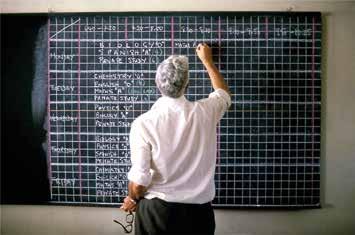
‘thankeo’ or ‘exciat’ or ‘wacing”... Jokes aside, the knowledge of English is still a serious matter at St Paul’s today though maybe not instilled with the same methodology as decades ago.
An 8-year old child boarder would probably weep himself to sleep some nights, then jump to the next stage of almost forgetting Mummy and Daddy’s faces; he would then make friends with another pal going through the same adaptation before finally fitting into school routine. The question was that after some time there came something called EXEAT which brought great excitement! Little ones had to readapt to family life; elder boys went through a sudden hatred for school blues, greys and shoelaces, and latched on to the latest fads - in the sixties and seventies those famous G… moccasins and dashing baseball jackets; all in all, anything BUT uniformity was the thing! And then, big and small had to quickly switch back to School Mode when returning after the school break.
Anecdotes abound, such as wandering about hills and rivers - no supervision or safety briefing - to pick up snakes, tarantulas, or scorpions to frighten pals; older boys had lots of fun when concocting some original April Fool prank to play on teachers! There was always time for games such as Pinetree Cones or “Cokite” Wars, fun only if you weren’t hit! Fads: suddenly the whole school was flying paper planes,
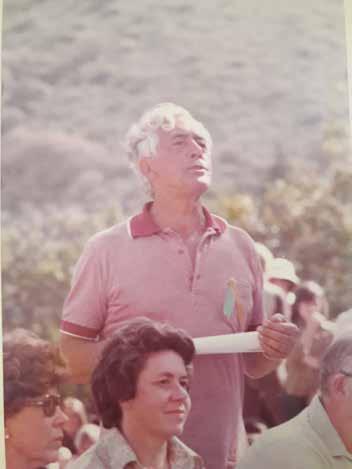
While some former students stated that meals at School were excellent on the whole, others commented that they were standard, while there were those who said that the secret was to “learn to like it”.
Someone remembered that, while helping to lay bricks, boys would pay the masons to cook chorizos for them, just before lunch. Regarding table manners, no Table Monitor was mentioned by name but remembered for orders given at lunch- or dinner-time: “...don’t crouch, no elbows on the table, don’t slurp, drink from the side of the spoon, serviette on the lap”!
Not everyone enjoyed "Saturday Midday Silence" during lunch, when Mr Thurn was sure students could benefit from Music Appreciation. That was before the mid-60s, because, later on, that dislike was changed to Friday evenings due to a tell-tale message which would bring some painful retaliation! Regarding the - not at all unusual - institutionalised corporal punishment in most ‘English Schools’ in those times, a very touching letter from an elderly Mr. Thurn

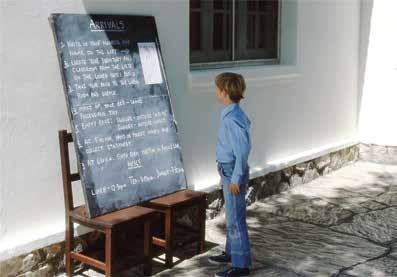
 First day at School - full immersion
Rehearsal for the House March Past for the annual Sports Day
First day at School - full immersion
Rehearsal for the House March Past for the annual Sports Day
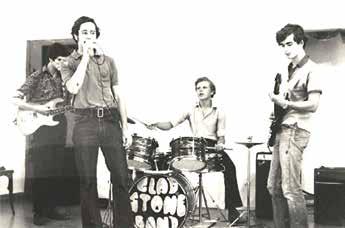
apologising for having applied these disciplinary methods brought a lot of peace of mind to many. On the other hand, the 60s and 70s were a never-ending musical whirl; St Paul’s older boys founded music bands such as the Gladstone, the Pink Lollipops or the Black Widow. Dominic Miller started his musical career here before going on to become English musician Gordon Matthew (Sting) Sumner's guitarist, and playing with Phil Collins and Peter Gabriel as well!
“Every now and again a large truckload of firewood would turn up and the whole School would be roped in to rush back and forth from the truck at the front to the store round the back”, remembered one of the first students at St Paul’s. There were times when the entire body of students was put on some work; as years went by, they helped in clearing spaces by raking or digging, lugging stones up from the river, or assisting in the laying of bricks. ALL students agreed that either for fun or due to misbehaviour, they had gained experience for the future and that these chores were a good way for boys to learn hard work for no payment or reward. Learning isn’t only about theory or books...
Bob Thurn, being a keen sportsman, made sure the boys learnt how to play just about every possible game. As St Paul’s was divided in two Houses - Scott and Livingstone - the whole idea was to create a spirit

of competition which students put into practice with great enthusiasm in all sports and school activities, the core idea behind them being "achievement". Currently, sports continue playing an important role at St Paul’s with the first semester taken up with Rugby and Hockey, while the second semester is dedicated to Athletics.
A tribute must be hereby paid to local and foreign tutors who played an important part at St. Paul’s: Mrs. Van der Sluys, Mrs. Thornton, Mr. Mills, Mr. Milman, Mr. Rumboll, Mr. Dunn, Mr. Lovell, Mr. Pearson, Mr. Grant, Mr. Páez, Mr. del Prado.
As for former Saint Paulians who have left us, just a few words to state that they were and will forever be part of a brotherhood which didn’t end when school life did.
The vast majority of ex-students have acknowledged that School Values, Moral, Ideals and Work Ethic have been present throughout all of their lives, so all things considered, the most appropriate manner to end this overview is to add the thoughts of a few, in their own words: “No school ever replaced St Paul's for me.” - “I enjoyed some of my best learning experiences there, both academic and life lessons.” - “School was a place where good friends were more like brothers.”“I remember my time there with great affection, making good friends, learning good life lessons and having a good teaching experience.” - “We were educated down a straight path of correctness and fundamental values for existence.”
Janet Bruce was a boarder at Reydon School for Girls, a neighbour of St Paul’s School in the area of La Cumbre, Córdoba. That being so, she set up this article with the invaluable help of St Paul’s ex-border Edward Pearson and many other contributors of anecdotes, information and photographs.
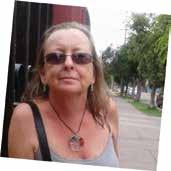
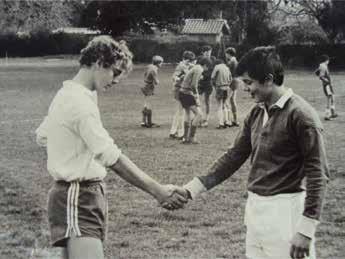
 Cricket was taken seriously
Good sportsmanship - an essential value
Cricket was taken seriously
Good sportsmanship - an essential value
Part of my ancestry spans quite a few years and goes back to the United States of America, in the 1800s. For the better part of the XIX and XX centuries, the male members of the Page family were all military men who saw service in either the Army or the Navy and were involved in momentuous events, as will be seen when looking over the details I have recorded below. Faced with the facts, it seems pretty obvious that they went through some trying times, as is the case with so many servicemen when involved with fighting. As I see it, these men were brave soldiers, each one in his way, who faced up to the excrutiating tasks they were set with extreme courage and valour. We stand in awe at their feats. Once the wars were over, and quite contrary to the lives of our forebears, my father and I have been attached to business concerns and faming, latterly. Bear with me for a short walk down memory lane.
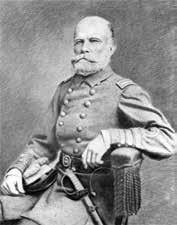
My great great-grandfather was Commodore Thomas Jefferson Page, USN/CSN (1818/1900) from Shelly, Gloucester, Virginia, and my great great-grandmother was Benjamina Price of Williamsburg, Virginia. They settled down in Argentina in 1865, after the American Civil War. Having not signed President Lincoln's Patriot Act, he never returned home.
Thomas first came to Argentina in 1853, at the time General Urquiza had deposed dictator Juan Manuel de Rosas. He arrived on behalf of US President Philmore, commanding the US Navy steam gun boat “Waterwitch”. His mission was to explore the navigation of the Paraná River all the way up to Corumbá, Brazil. He stayed on this job until 1860. During that time, he became a very close friend of Urquiza’s.
The following article was published some years ago in the Pentagon’s “Military History” magazine - a little story I picked up at the Lincoln Library in Buenos Aires.
"The American Consul in Paraguay, Mr Brown, took good pleasure in mixing private business with his diplomatic duties, becoming quite a successful businessman in Asunción (Paraguay) until he had a serious controversy with Paraguay's President Mariscal Solano López, who decided to put Mr. Brown and his family in jail. At that time Commander Thomas Jefferson Page and his crew of the US Navy’s “Waterwitch” happened to be exploring the river Paraguay. With no doubt, officers and crew decided to raid the jail-house where the Consul and his family were held prisoners and rescue them at
gunpoint, taking the Brown family back to the ship's safety."
This action generated a very serious diplomatic conflict which involved Paraguay, Brazil, Argentina and the United Sates.
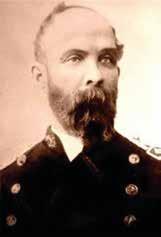
My great-grandfather was born in Shelly, Gloucester, Virginia on the 29th of November, 1842 and was killed in action on August 2nd, 1890 while exploring the Pilcomayo river.
At 23 years old, and as a veteran of the North American Civil War, he settled down in the province of Entre Ríos, following his father Thomas J. Page´s footsteps. John was later summoned by the Argentine Navy to continue the exploration of the Paraguay, Bermejo and Pilcomayo rivers, a task that his father had undertaken on behalf of President Philmore. His rank in the Argentine Navy was Capitán de Fragata
I know John travelled back and forth to his hometown in Virginia, in vain trying to sell his father's property. His unsuccessful attempts ultimately led him to settle down in Argentina, where he returned with his younger brother Phillip. It is my guess that he accepted an Argentine Navy commission so as to allow him to make a living in this country because his finances were not in good shape. Nevertheless, he left his heirs some property in Entre Ríos, and in Pergamino when he passed away in 1890. Both he and his wife Julia (Lily) Lowry, daughter of Scottish immigrants in Entre Ríos, are buried at the Buenos Aires British Cemetery in Chacarita.

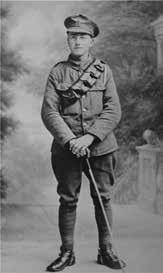
George was born on January 5th, 1889 and died on February 2nd, 1972. When he was 2 years old, his father was killed in action in Formosa (on the Pilcomayo river). Due to this situation, his mother Julia (Lily) Page Lowry travelled back to England with her sons. At that time, his grandfather T.J. Page was living in Great Britain, acting as a liaison officer between the British and Argentine governments.
My grandfather was educated at Sandhurst Military School from where he graduated as a Cavalry Officer (Lancer) in 1907/8 and was attached to the Bedfordshire Yeomanry Regiment of the British Army and became a Captain. He was awarded a Military Cross for gallantry in the face of the enemy at the battle of The Somme (France) in 1916.
He married my Scottish grandmother, Ethel Roughy Piper, in 1914. After WWI (around 1920) he was dismissed from the British Army. About 1930/1931 he went to work in Hong Kong where he stayed until just before the Japanese invaded in 1941. He then moved to India until 1950 when he came back to Argentina. After years of living apart, the couple came together again and lived in Buenos Aires until they passed away - my grandmother in 1968 and my grandfather in 1972.
My grandfather was a tough guy. He didn't socialize very much with us. My mother commented that he was affected by his war experiences which caused him much distress, plagued by traumas he could not overcome. He was a member of the British Legion, either in Buenos Aires or Hong Kong. I understand he was also a member of the English Club in Buenos Aires.
*Please take into consideration that Capt. George N. Page should not be confused with his uncle George Nelson Page in Rome, Italy.
We now leave the Services to move over to safer climes!...
Mercedes Mcklein born in Buenos Aires on July 20th,
12 years old, he took a job with the Argentine Estates
He remained with Bovril
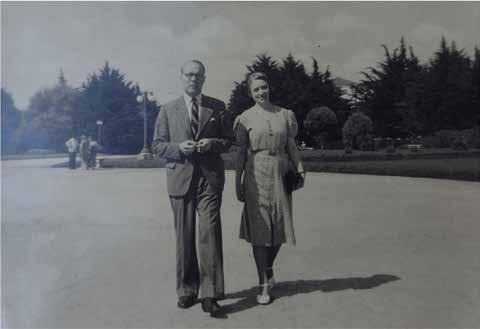
given the task of overseeing the sale of the Company’s properties in Argentina which were scattered over the provinces of Santa Fe, Corrientes, Formosa, Entre Ríos, Córdoba and Buenos Aires. As a pilot, he moved around during all those years piloting his own plane.
My dad passed away in Buenos Aires on November 2nd, 2007.
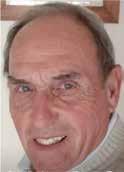
I was born on September 7th, 1946 in Olivos, Buenos Aires. My schooling was carried out variously in the Bovril Estates' town of Santa Elena; in La Paz, province of Entre Ríos; and in La Cumbre, province of Córdoba. With a degree in Agricultural Engineering and post-graduate degrees in Applied Mechanics and in Business Administration, my Senior Management work has seen me attached to international corporations such as: Caterpillar Tractor Corp. Inc.; John Deere & Co.; Sandvik Inc.; Tamrock, Finland; and France Telecom – Stet-Telecom Argentina SA. I currently farm my own land in Pergamino, in the province of Buenos Aires.
I am a one-digit handicap golfer and former ABCC District Representative. I am married to Susana Solá and we have one daughter, Amy, who is a Doctor (MD).
And so, from battlefields of yore to the ploughed fields of the Pampas, our family background is thus played out across the intervening 200-odd years... I hope the account has not bored you.
I hold to the belief that if one forgets one's family history, one is the poorer for overlooking the facts. So, lest we Pages forget...

The British companies that operated in Argentina during the nineteen hundreds had a perk for their executives that was called “Home Leave”.
This benefit was a paid trip for all the family to the United Kingdom. Many of the trips were done on the ships which came to Buenos Aires or La Plata to load refrigerated meat for transport to Europe. One of those shipping companies which had comfortable areas prepared for passengers was Royal Mail Lines.
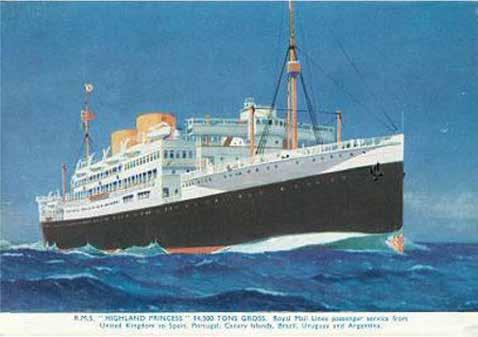
The Royal Mail Steam Packet Company’s royal charter was signed by Queen Victoria on the 26th of September 1839. The 900.000 pounds sterling required to start the construction of vessels for delivery in less than 2 years was subscribed by bankers and investors and was to cover the cost of the building of 14 steamers and 3 schooners. The first ship baptized was the SS “Clyde” which was launched on the 25th of February 1941; she was rapidly followed by many more because 19 shipyards had received building orders. In all, more than 160 ships were bult by the Royal Mail during its existence.
Most of the liners that will be recalled by those taking “home leave” from Argentina were either the “A” boats (Alcantara, Arlanza, Amazon, Asturias, Atlantis, Andes) or the Highland boats (Highland Monarch, Highland Patriot, Highland Princess, Highland Chieftain, Highland Brigade, Highland Hope, and Highland Warrior).
During WWII, these ships were converted to armed merchant cruisers or troop carriers, and were very lucky during the outcome as only one of the Highland boats – SS “Highland Patriot” - was torpedoed in 1940.
The most important of the Royal Mail survivors was the 26.000-ton “Andes”. After the war she was refitted from being a troopship to a modern passenger liner. The “Andes” made her first voyage out to the River Plate in January 1948 and was received by President Perón as she was the largest ship to enter the port of Buenos Aires. The “Andes” carried 324 First Class passengers and 204 passengers in Second Class. (Perón later signed the Andes pact on board, covering shipments to Great Britain.)
As was customary on all the liners serving South America, the ships had the highest possible standards for cabin comfort and cuisine, and services aboard included swimming pools, deck-tennis
courts, shopping arcades, hairdressing saloons and cinemas.
I am sure those who had the benefit of “home leave” will have happy memories of their trips to the United Kingdom on one of the Royal Mail vessels.
For those readers who may be interested, models of some of the Royal Mail ships are exhibited at the “Museo Naval” located in front of the Rio Luján in Tigre, province of Buenos Aires.
Author’s note: I was one of the lucky passengers who travelled on Royal Mail boats on various occasions as my father, Ted Lowndes, worked for the greater part of his life in “La Mala Real” offices - on the corner of Reconquista and Sarmiento streets in Buenos Aires - and finished his carreer there as General Manager.

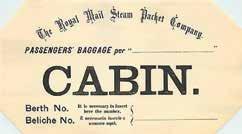
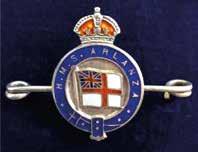

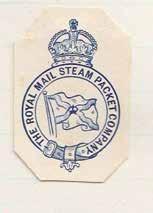


Arthur David Lowndes is presenly a berry farmer in the Andes of Chubut and has worked as an oil company executive in Australia, Indonesia, USA and Trinidad and Tobago. Also Choir director, musical judge and concert organist and ABCC representative in Chubut. He is the author of the "British Sing Along" CD which is on sale at the ABCC offices.
 RMS “Highland Princess”
RMS “Highland Princess”
The Calafate is a bush that grows in Patagonia.
There is a legend that anyone who eats the berries from this bush will always return to the region. Here are two tales relating to this; one from the Ona people that used to live in Tierra del Fuego and the other from the Tehuelches, a nomadic people that lived further north. Sadly neither of these peoples are still with us.
There was once a tribal chieftain of a race that lived at the bottom of the world and is now completely lost to us. He had a beautiful daughter called Calafate, who had jet black hair and huge yellow-golden eyes, and he was very proud and very protective of her.
One day a young man named Selk’nam from another tribe happened to pass by where the young girl lived. He spotted Calafate walking on the shore and approached her; their eyes met and they were both immediately smitten. They met once again, and that day they pledged undying love and a lifetime together.
But their tribes warred with each other and the young lovers knew their elders would never accept them marrying, so they decided to run away together. The chieftain heard of their plans and was very upset. After long thought he decided that his daughter must have become possessed by the evil spirit Gualicho; why else would she consort with his enemies? In his anger he consulted his shaman who told him to do whatever was necessary to stop Calafate and Selk’nam escaping.
The shaman was not a bad person but he was obedient to his chief, and he used his magic to turn the young girl into a bush with yellow flowers, the bush that we know today as the Calafate bush. She would be going nowhere now.
Selk’nam soon found out that she had been transformed and was now covered with sharp thorns. He could look at her but could never touch her. His frustration was overbearing. Each yellow flower reminded him of her deep, golden eyes. Heart-broken, he died in the night of grief.
When the shaman heard of Selk’nam’s death he felt bad and caused the flowers on the bush to change into delicious purple berries, formed from the heart of the brave young man. These are the berries that appear each year in the Autumn, and it is said today that anyone who eats these berries is bewitched by the shaman's spells on Calafate and Selk’nam, and once they have tasted the fruit they will always be drawn magically back to Patagonia.

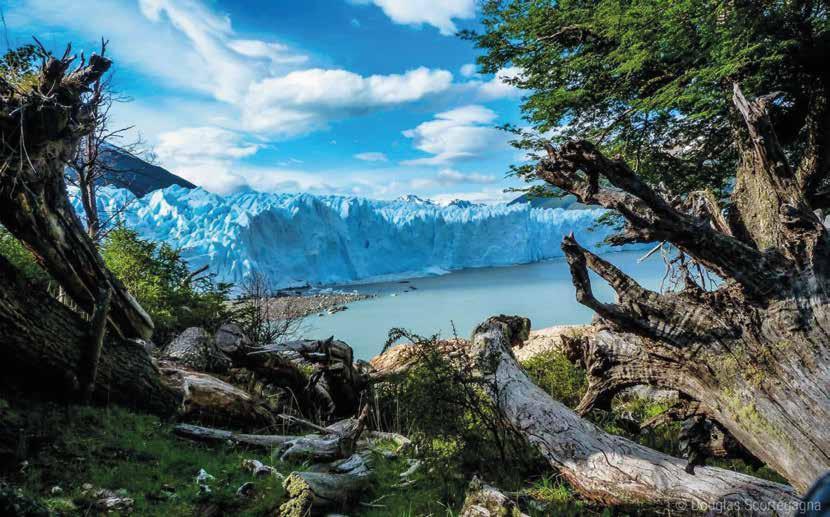
The Tehuelche people were indigenous, nomadic tribesmen who inhabitated the Patagonian pampas where the provinces of Chubut and Santa Cruz are today. Tourists visiting the region may have seen the caves filled with painted hands that their ancestors left hundreds of years ago.
One day, many moons ago, the chief of the tribe decided it was time to move north. Winter was approaching and they needed to be further away from the snow and ice that would soon arrive. An elderly woman in the tribe realized that she was too old and weak to travel with the others, so when the time to leave came she hid and was left behind to endure the hardships of winter alone. Some women in the tribe left for her a tent made from guanaco skins and some wood and food to keep her alive, but her companions didn't think she would survive the harsh winter weather.
But the old woman did not die. Not exactly. Through some kind of magic, and it is not clear whose, she was mysteriously transformed into a bush with yellow flowers; the bush we know today as the Calafate. The bush provided shelter for the birds, protecting them from the cold wind and ice. And each year, as winter approached, the bush bore berries which provided them with food. Year on year the birds would return to safety of the magical calafate bush.
Indeed, some birds stopped migrating altogether and as the news spread many of those who had left returned to try the new fruit. So did the Tehuelches when they returned the following spring, and they quickly adopted this new plant as part of their diet.
Slowly the plant propagated throughout the region and now it can be seen everywhere, And they say that for ever after, like the birds and the Tehueches of old, for they are long gone too, "whosoever eats of the Calafate berry will always return to Patagonia".


Martin Eayrs lived in Buenos Aires from 1975 to 2000. He also worked for the Buenos Aires Herald and the British Council. He was Chairman of the ABCC City Branch from 1996-1999. He currently divides his time between homes in the United Kingdom and San Martín de los Andes.
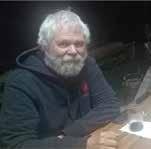
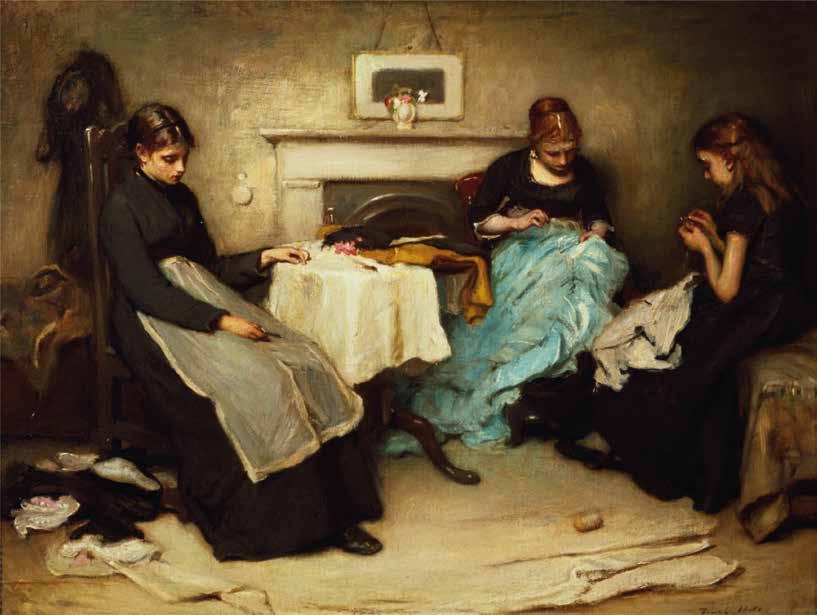
The main aspiration for most of young middle-class women in the 1850’s was to be married. If a suitable husband was not available, any one at all was better than none. Marriage meant complete release from dependence on parents to dependence on a husband as protector and new head of the household, where she and her children were expected to be obedient and submissive. What she was doing was changing one traditional patriarchal family for another, with the exception that, in this new case, she was giving up her identity altogether. She was becoming a non-person, or rather, according to the existing law in England, ‘one’ person with her husband, that person being him.
By marriage the bride vowed before God to obey her husband. Though he promised his wife all his worldly goods, it was in fact the wife who forfeited her property to him. He had complete control over her property, including her ‘clothes and trinkets,’ her earnings, her body and her children.
Legal dominance covered beating with impunity as long as it was within the context of ‘reasonable chastisement.’ Rape did not exist, as the husband´s right to sex was assured by law, and the refusal to cohabitate was considered contempt of court, liable
to prison sentences.
This ideological interpretation of women’s identity was centred on the belief that women were both physically and emotionally weaker than men, unsuited to exercise public power and responsibility. The prevailing view was that women were best engaged in a protecting, nurturing role within the home, providing moral guidance to children and a peaceful and calm environment for the family. Victorian women therefore acted as a boundary between the public and private world.
The Good Wife's Guide – Housekeeping Monthly, 13 May, 1955.
Have dinner ready. Plan ahead, even the night before, to have a delicious meal ready on time for his return. This is a way of letting him know that you have been thinking about him and are concerned about his needs. Most men are hungry when they get home and the prospect of a good meal is part of the warm welcome needed.
Prepare yourself. Take 15 minutes to rest so you'll be refreshed when he arrives. Touch up your make-up, put a ribbon in your hair and be fresh-looking. He has just been with a lot of work-weary people.
Be a little gay and a little more interesting for him. His boring day may need a lift and one of your duties is to

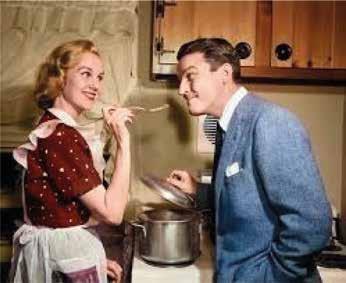
provide it.
Clear away the clutter. Make one last trip through the main part of the house just before your husband arrives. Run a dust-cloth over the tables.
During the cooler months of the year you should prepare and light a fire for him to unwind by. Your husband will feel he has reached a haven of rest and order, and it will give you a lift too. After all, catering to his comfort will provide you with immense personal satisfaction.
Minimize all noise. At the time of his arrival, eliminate all noise of the washer, dryer or vacuum.
Encourage the children to be quiet.
Be happy to see him.
Greet him with a warm smile and show sincerity in your desire to please him.
Listen to him. You may have a dozen important things to tell him, but the moment of his arrival is not the time. Let him talk first – remember, his topics of conversation are more important than yours.
Don't greet him with complaints and problems.
Don't complain if he's late for dinner or even if he stays out all night. Count this as minor compared to what he might have gone through at work.
Make him comfortable. Have him lean back in a comfortable chair or lie him down in the bedroom.
Have a cool or warm drink ready for him.
Arrange his pillow and offer to take off his shoes.
Speak in a low, soothing and pleasant voice.
Don't ask him questions about his actions or question his judgment or integrity. Remember, he is the master of the house and as such will always exercise his will with fairness and truthfulness. You have no right to question him.
A good wife always knows her place.
Being a housewife in the 21st century puts you in a controversial position. Many people believe housewives are nurturing their families, making homes and building up society. Others are convinced housewives
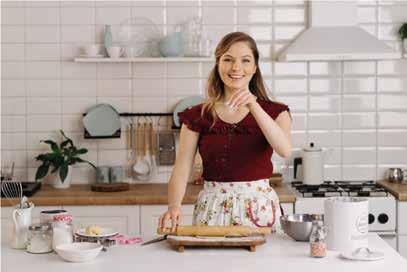
are old fashioned and outdated, responsible for thwarting the efforts of women who work outside the home and insulting the memory of those who worked so hard to obtain equal rights for women. What does it really mean, being a housewife in the 21st century? There are no ‘typical’ housewives or stay at home moms anymore. We are all different, with different lifestyles and circumstances. Some of us have never worked outside the home, many of us have. Most of us are well educated – some of us are biochemists, neuroscientists, doctors, lawyers and more. Many of us have children, a number of us don’t. Some of us love what we do and wouldn’t have it any other way, others are doing it as a labour of love while they put their own dreams on hold. We are not all kept women. Many of us contribute to the family finances either through savings we have built up in earlier years or with our own businesses, often run from home.
In a nutshell, being a housewife in the 21st century is a profession in and of itself, a vocation and a labour of love. It’s a choice that deserves more than just a little respect.
I respect April J. Harris´s opinions in the above excerpt – taken from Making the Best of Life – for which I have no comments to add. However… I just wish, sometimes, that I had been a husband in the 1950´s.

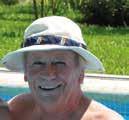

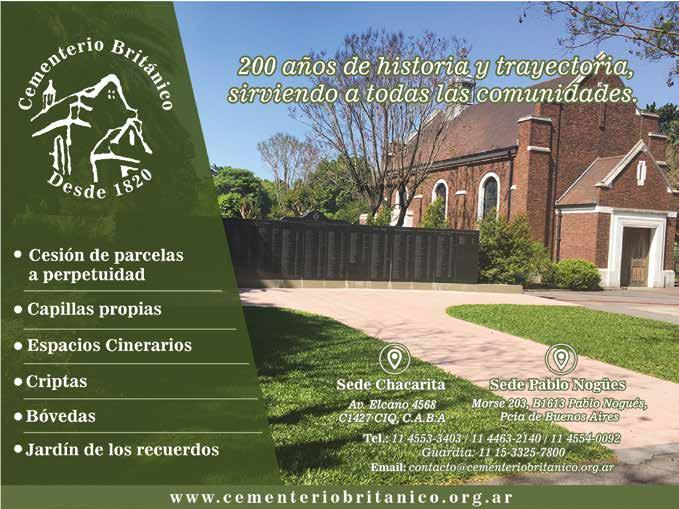


If you are a pencil pusher (in the right sense of the word), ever wonder what those little numbers and letters are, beside the manufacturer’s name, at the blunt end?
Well, we’re here to tell you all that they’re there for a good reason, and to anyone who knows a lead from a lead, they signify an attribute called PENCIL HARDNESS. Yep, not all leads (the black filling in the middle with which one writes), are the same nor do they function the same way on a writing surface. As a matter of fact, used for the wrong purpose, they can be damnably annoying. So, without further hiccups nor hindrances, here goes our acquired knowledge on the matter (begging your pardon if you’re one of the ones “in-the-know”).
The process of determining pencil hardness dates back to the work of Nicolas-Jacques Conté (remember Swiss Contés from school days?) who c.1795 developed techniques for controlling the ratio of clay to graphite in pencil lead manufacture. The Conté grading system was a numerical scale where 1 was the hardest and 4 the softest. Later, British manufacturers developed their own letter-based grading system with softer leads given a B (for “black”) preface, and harder leads prefaced H (for “hard) – well I’m blessed! Over time, these two scales were combined to create a scale used
widely across Europe and occasionally in North America:
hardest – 9H, 8H, 7H… 2H, H, F, HB, B, 2B… 7B, 8B, 9B – softest
Grades 8B through B are recommended for artwork. These softer leads are formulated with extra graphite for sketching and shading.
Grades HB through 4H perform beautifully for drafting. The various blends of graphite and clay assure black lines and longer point wear.

Grades 5H to 6H are extra-hard leads for drawing fine, light lines. Points are extremely long-lasting. We believe grades 7H through 9H can scratch glass and stone (but we’re having the Myth Busters test that!)
Many USA pencil manufacturers, however, use a numerical code which inverts Conté’s gradings, making #1 the softest, and #4 the hardest (classic!). A rough chart of equivalence between the two systems can be shown thus:
Softest - #1 = B, #2 = HB, #2 ½ = F, #3 = H, #4 = 2H - hardest
N.B.: (disclaimer) All these grading systems are to some extent arbitrary, since no strict or formal definitions of pencil hardness have been universally adopted.
And so, more knowledgeable now on the subject and with something to start a conversation with at your next coffee morning or book club meet, you may now return to the computer keyboard and your faithful mouse, neither of which need lead nor paper to perform! Pity…


No matter what occasion, a Pipe Band will add an unforgettable highlight to your event







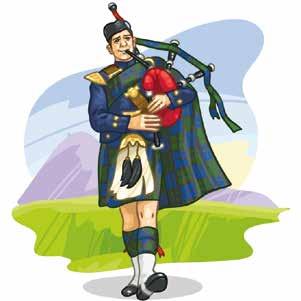

Night falls and all our earthly dreams will come tomorrow. Death calls and all our earthly dreams will come tomorrow.
The fertile ditch is always rich with fruit and flowers If tended well these all will bud and bloom tomorrow
The streams I know still swell and flow to reach the ocean I have no call to doubt that it will rain tomorrow.
Those winter days when fires blaze with chestnuts roasting Each flame that dies today can be kindled tomorrow.
We dream from birth to leave the earth like golden eagles The wind that fills the raptor’s wings will blow tomorrow
And I, Rashid, shall sit and listen to the birds sing I truly do not know if I shall see tomorrow
Washing herself on the mat sat the kitten. I on the bed to consider her message; That our life together was finally over. It had been wonderful while it had lasted; I’d understand but to please leave directly.
Looking around my eyes fell on the feline In mute comprehension she gazed back unflinching. Both of us timelessly eyes locked together, Alien intellects now understanding The undeniable need for departure.
The phone rang in triplets but I couldn’t answer. Nothing was left there now likely to keep me. With thoughts now of milk and restorative kibble I sat on the mat and examined the human, Then essayed a soft miaow and stole from the room.


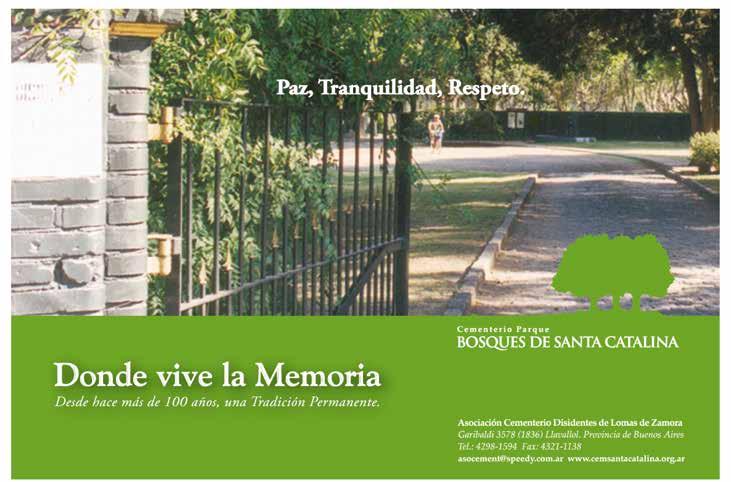

Peter is quite simply amongst the kindest and most generous people I have ever had the privilege to meet, and I say that after my first memory of him is from the early afternoon on the first day of my maiden visit to "La Isleta" in Ameghino when he bounded into the living room looking quite upset and telling Robert, Gringo and myself to quieten down or get into trouble as he was trying to sleep a siesta on a hot summer’s day before going back out to work on the farm. I recall staring wide-eyed and wondering what on earth I had got myself into going to the camp for a few days! Little did I know that with his thoughtful and loving ways he would soon turn "La Isleta" into a second home for me.

Being a man of exceptionally strong principles, once he finished school he volunteered to join the allied army during WWII where he became an artillery officer and was sent to train troops in India. After the end of the war, he returned to Argentina and worked at Swift in their edible oils department, but it was only in 1961 that Peter found his life-long professional calling and joined his father, as well as his brother John, in managing the family property. While doing so he became a very successful cattle farmer, a community leader, and key member of CREA in Ameghino.
Peter was a doer, and what he did, he did with a smile. He also had an infectious laugh that could be heard for miles. If he thought something needed to change, he tirelessly worked at implementing change. This made him a valuable member both of the Anglo community in Argentina as well as the overall community in Ameghino. On the political front he was instrumental in obtaining Ameghino's autonomy, and his passion for progress also made him a Consejal and an active local player in the UCEDE.
In many ways he was a man on a mission, and he worked diligently to leave his 6 children (Robert, Gringo, Nana, Tisha, Noonie, and Jo), his 23 grand kids, and his 21 great-grandkids a better world than the one he inherited. He had the self-confidence not to worry too much about what others thought of him and this allowed him to get on with life, both loving and living generously.
I remember him being a stickler for table manners and he had a strong dislike for anti-social behaviour. All in all, he was a true gentleman.
We will all sorely miss him, no one more than his gorgeous and wonderful wife Joyce. The world has lost a beacon for good with his passing. So, I ask that when you think of Peter in those everyday moments, remember to be kind and thoughtful as he always was. In so doing, the power of Peter remains even in memory – making the world a better place, one act of kindness at a time.




Eric G. Campbell O.B.E.
24/03/2024
"Ha nacido una estrella"
Irma, Mary, Jack & family
Peter Harrison
27/2/2024
Julianne, Agustin & their children
Peter Harrison
27/02/2024
The Pritchard Family
Alice Mary Sharpe
25/1/2024
Her Michael Ham Friends
Richard Dean
01/01/2024
His brother Alec & sister Caroline Darley
Richard Dean
01/01/2024
His wife Eileen and their children
Trevor Prtichard
27/2/2023
Julianne, Agustin & their children
Jack Hussey
From Ted Bagnall
Roxana Ines Absi
Ana Laura (Ani) Alvarez
Olga Alvarez de Barr
Carlos Omar Amarillo
Daniel Argüello
Alan Arntsen
Carlos Axel Augspach
Ted Bagnall
William & Mariana Bain
Nicolás Bannister
Martha C Barbat
Mary Barker
Lally Gatica de Barr
Susana C. Bateson
Ian Bishop Beech
Merina Begg
Daniel Bell
Jane Beller
Walter & Frances Bengtsson
Stephanie Berwick
H.A. Bindon
Penella Bingham
Sally Anne Black
Richard E. Bowen
Anne M Bradbury
Mauricio Bradbury
Maria Elina Bravo
Basilio Jorge Bridger
Margaret Bridger
Pedro August Bridger
Ann Bridger de Eden
Alejandra Maria Brown
Alejandro Bruce
Gavin Bruce
Janet Bruce
Iris Doreen Bruzzone
Susana Beatriz Budai
Roberto Ariel Bunge
Leonard Welch From Ted Bagnall
Special thanks to this list of donors, who quietly yet regularly help the ABCC.
Rodrigo Bunge
Ralph Dennis Burton
Juan Cameron
Roderick A. Cameron
Irma Cid de Campbell
Juan Argentino Campbell
Reinaldo D. Campbell
Daniel Carr Rollitt
Miguel A. Cassels
Roberto Cegelnicki
Patricia Chandler
Carina & Resi Chapman
Dorotea I. Charap
Peter And Christine Clarke
Ricardo Federico Cleaver
Jorge Clutterbuck
Esteban Cohen
Silvia Collingwood
Eduardo S. Colson
M. Adriana Colucci de Blanco
Roberto C. Cox
Carlos Cranbourne
Juana Sylvia Croucher
Roberto Daintree
Alejandro Daly
Barry Y. Darbyshire
Caroline Darley
Elisa Ana (Elizabeth) Dick
Jorge Carlos Dickinson
C. W. de Donaldson
James & Denise Donaldson
Eduardo Donnelly
P.A. Dougall
Stephanie Dougall de Collazo
Victoria Helen Duff
Heather Raquel Dunn Randall
Vivian Ann Earsman
Martin Eayrs
Pedro Eddy
Nicolas Edwards
John David Carlos Emery
Maria Marta Emery
Francis Fernie
Derek Foster
Susana Foster
Ernesto Fox
Valeria Fragola
Diego Edgar Francis
Roberto Norman Fraser
Margarita A.G.D. de Carlés
Jorge R. Gandolfo
Diego y Margarita Garbarino
Diana Garrett
Jennifer Geddes
Martin H. Gibson
Matías Alejandro Gibson
Victoria Gibson
Jesus María Godoy
Maria Godward
Nora C.G. Goodliffe
Jaime R. Gordon Davis
Lorraine Gordon Davis
Luisa L. Gordon Davis
Joanne Graham-Yooll
Eduardo & Karin Grant
Elaine María Macadam de Grant
John Alistair Grant
Lorenzo Felipe Grant
Jean E. Graves
Andres Gregg
Roland V. Grimmer
Alfredo Martin Grisar
Ronaldo G. Gunn
Pendril Gunningham
George Anthony Barton Hall
Carlos Edgardo Hampton

Cecilio Alejandro Hampton
Jorge Ronaldo Hampton
Juan Antonio Hampton
Alicia Hannaford
Jorge E. Hannaford
Guillermo Harris
Ronaldo Eduardo Hawes
Alberto Francisco Henning
Alice Hobbs Jones
Axel N. Hogg
Tomás J. Holway Ramos Mejía
William Alejandro Horsey
Graham S. Hortis
Helen Houstoun
John Neville Hudson
Tomas N. Hudson
Brian Hughes
David Hughes
Rolando Huisman
Cecilia Laura Hunter
Juan Hunter BEM
Judy Hutton
Margarita A. Jackson
Richard A. James
M. P. Johnson
Ruth Jones
Cinthia Irene Juricic Botto
Graciela Sandra Karas
Geronimo J.A Keen
Patricia Kennard
Lavinia Maria Kennard Keene
Patricio Kirby
Rodolfo A. Kirby
Malanie Kirkwood
Julia Maria Kirton
Ana María (Annete) Krieger
Pedro Kristiansen
Eduardo Carlos Lane

Florence M. Lane Richardson
Federico W. Langdon
Ernesto Nicanor Lastra
John & Maria Inés Lee
Michael Leslie
James Douglas Lewis
C.E. Lockwood Martínez de Hoz
Guillermo Jaime Logan
A. y J. López Pueyrredón
Timoteo Juan Lough
Arturo Lowndes
Margarita Ana Lyons
Cecilia Inés Macadam
Ronald Macgaul
Phyllis Magdalena Mackenzie
Felicia E. Hortis de Macnie
Nancy Elizabeth Mitchell
Richard Moeller
Michael Mohr-Bell
Valeria Ana Monk
Christine Moore
Maxine Louise W. de Moore
Dudley Jorge Morgan
Carlos Morris
Jean Morris
Lee Morris
Guillermo Murchison
Barbara Murray
K&J Murray
Malcolm Nino
Mariana Niven
Renee Rosa Niven
Raul Alejandro Piñero
Richard Place
Ricardo S. Pollock
Helena Palmer de Powell
Jill Pratt
Paulina Juana Pritchard
David Ricardo Pruden
David Puleston
Graciela Queirolo de Ghiraldo
Silvia Raquel Quesada
Eduardo J. Raffo
Joan Raitzin
Edwin C. Roberts
Margarita Roberts de Cavanagh
Carlos Maria Rodriguez Lara
Sylvia Ryan Bahmann
Jorge M. Steverlynck
Ian M. Stocks
Pedro Stocks
Ian Strickland
Miguel Strugo
Jacqueline Syme de Steed
Ian R. Taylor
Jenifer J. de Taylor
Roberta Dagmar Taylor de Clark
Patrick Temple
David Christian Thomas
Richard R. Thomas
May Thompson
Virginia Tuckey
Silvia Elia Turner
Carlos E. Uijt den Bogaard
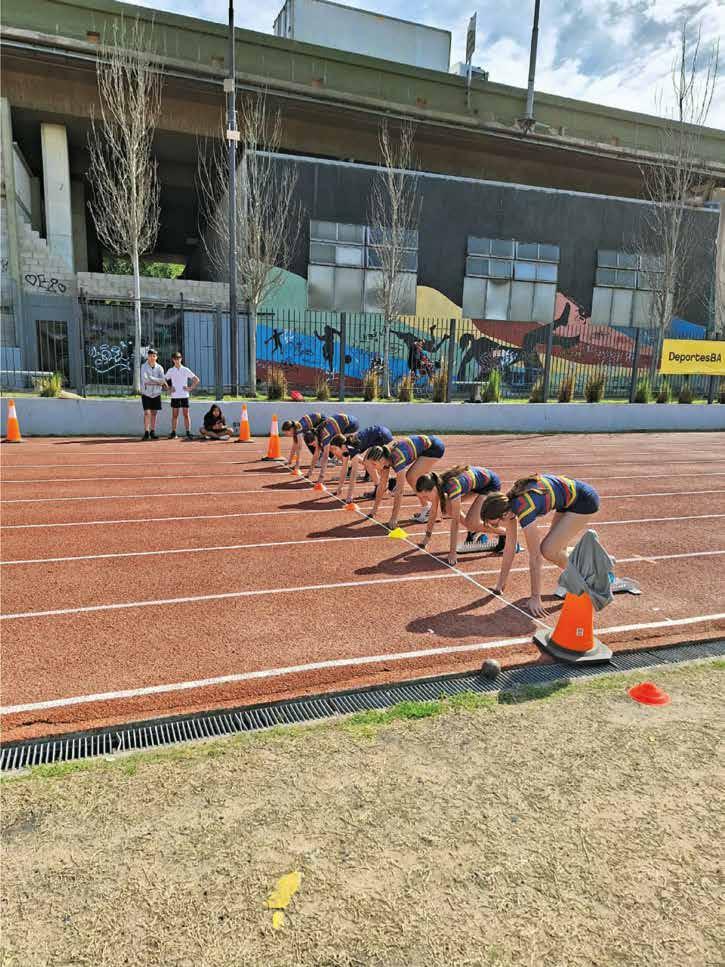
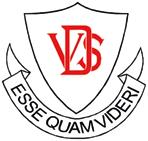



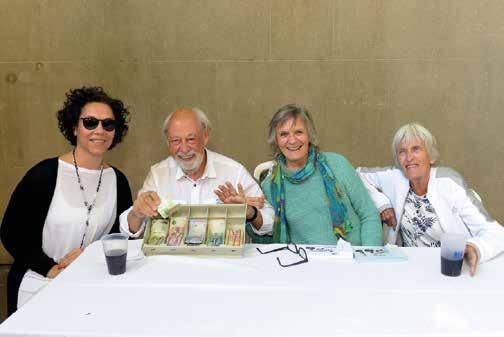


A clear conscience is usually the sign of a bad memory.
Wi��’� E�lo�� a� Hu�b�n�’� F���r��
“N��m�� ��e�e� � �l�o� �r�ns�u�i�� �u� �i� �l�o� ���� wa� �� �� �ec�r�, s� ��� doct�r� a��e� �� i� I ���� �ha� i� wa�. T��� �r��n��� ��e�e� t� �n�� t� s��� N��m��’� �i��.
“Tra�ic����, I ha� ����� �n��� �i� �l�o� ����, s� I ���� ha� ���� t� h�l� �i� h�n� �n� s�� g�o����. I’�� ����� f�r�e� h�� ���p����� �� N��m�� wa�. E��� a� �� wa� fa��n� �w��, �� ��p� �� ��i�����n� t� ��, ‘B� po�i����, �� po�i����’.
“Tha� wa� �� N��m��. A�w�y� ������n� � ���r�.”
Lexophilia
Al�h�u�� �� �� ��� �ic�i�n���, i� i� ��p��e� �ha� "L�x������" �es����e� � ��rs�� �h� l��e� ��n��n�e� �u�� a�, "Y�� c�� ���� � �i�n�, �u� y�� c��'� ��n� fi��," �n�, "T� ��i�� �i�� � �r���� ��n��� i� p��n��es�."
A� �n�u�� c���e�i�i�� i� ��l� �� ��� 'N�� Y��� T��e�' t� ��� �h� c�� ��ea�� ��� �es� ��i��n�� ��x������.
This year's submissions: En��i�� i� ��� ���� l�n�ua�� ����� y�� ����� �� p���w�y� �n� p��� �� �����w�y�.
I�’� �ls� ��� ���� l�n�ua�� ����� y�� �e�i�� �� � �l�� �n� �l�� �� � �e�it��.
W��� y�� �r�n�p�� s��e���n� �� c��, i�’� c���e� � ������n�. Bu� ���� y�� �r�n�p�� s��e���n� �� ����, i�’� c���e� c�rg�.
I �h�n�e� �� �Po�'� n��� t� Tit��i�. I�'� ��n��n� n��.
En�l�n� ha� n� �i���� b���, �u� i� d�e� h��� � L����po��. H��n�e� F��n�� p�nc��e� ���� �� ��� ����e�. T�i� ���� tod�� s�i� ��� �eco����e� �� �r�� ��� Ve�et��i�n� C���, �u� I'� ��e�� I'�� ����� �e� �����v���.
I �n�� � ��� �h�'� ad�ic�e� t� ������n� �r��� ��i�, �u� �� s�y� �� c�� st�� ��� ����.
A ���e� �h� st��� � c���nd�� �� ������ m�n�h�. W��� ��� �mo� ��ft� �� Lo� An���e�, U.C.L.A.
I �� s��� b�����e� �ha� ���� ����� �u� ���� � �h�r��.
A ��n�is� �n� � m��i���is� m�r��e�. T��� f�u�h� t��� �n� n���.
A ���� i� � �ea� ���e�w��.
Wi�� ��� m�r�ia��, ��� �� � ��� n��� �n� � ��es�.
P��i�� ���� ���m��e� t� � d�yc��� ��n��� ����� � �����-�e��-�l� wa� �e�is��n� � �es�.
A �i�y��� c��'� st�n� �l���; i�'� �us� �w� ���e�. T�� ��� �h� ���� �nt� �� ��h�ls���� ma����� las� ���� i� n�� ����� �ec����e�.
H� ha� � ��oto�r���i� ��m��� �u� i� wa� ����� ����� ����l��e�.
W��� ��� s�� ��� �rs� s�r�nd� � �r�� h��� ��� �h�u�h� ���'� ���.
A����nc���� i� � j�� ���� d���. Tha�'� ��� p��n� � i�.
I �i��'� ���� �� �e�r� a� �rs�. T��� i� ���� �� ��.
Di� y�� �e�� �b�u� ��� �ro�e�-��e� �ea���� �h� los� ��� j�� �ec�u�� ��� c��l��'� c�n�r�� ��� ����l�?
W��� y�� �e� � �lad��� �n�ec�i��, ����� �r�����. W��� ����ist� ���, ���� b�����.
I st��e� �� ��� �i�h� t� ��� ����� ��� ��� ��n�, �n� ���� i� d���e� �� ��.
I'� �ea��n� � bo�� �b�u� �n��-�r��i��. I �us� c��'� �u� i� d���
When everything is coming your way, you're in the wrong lane

